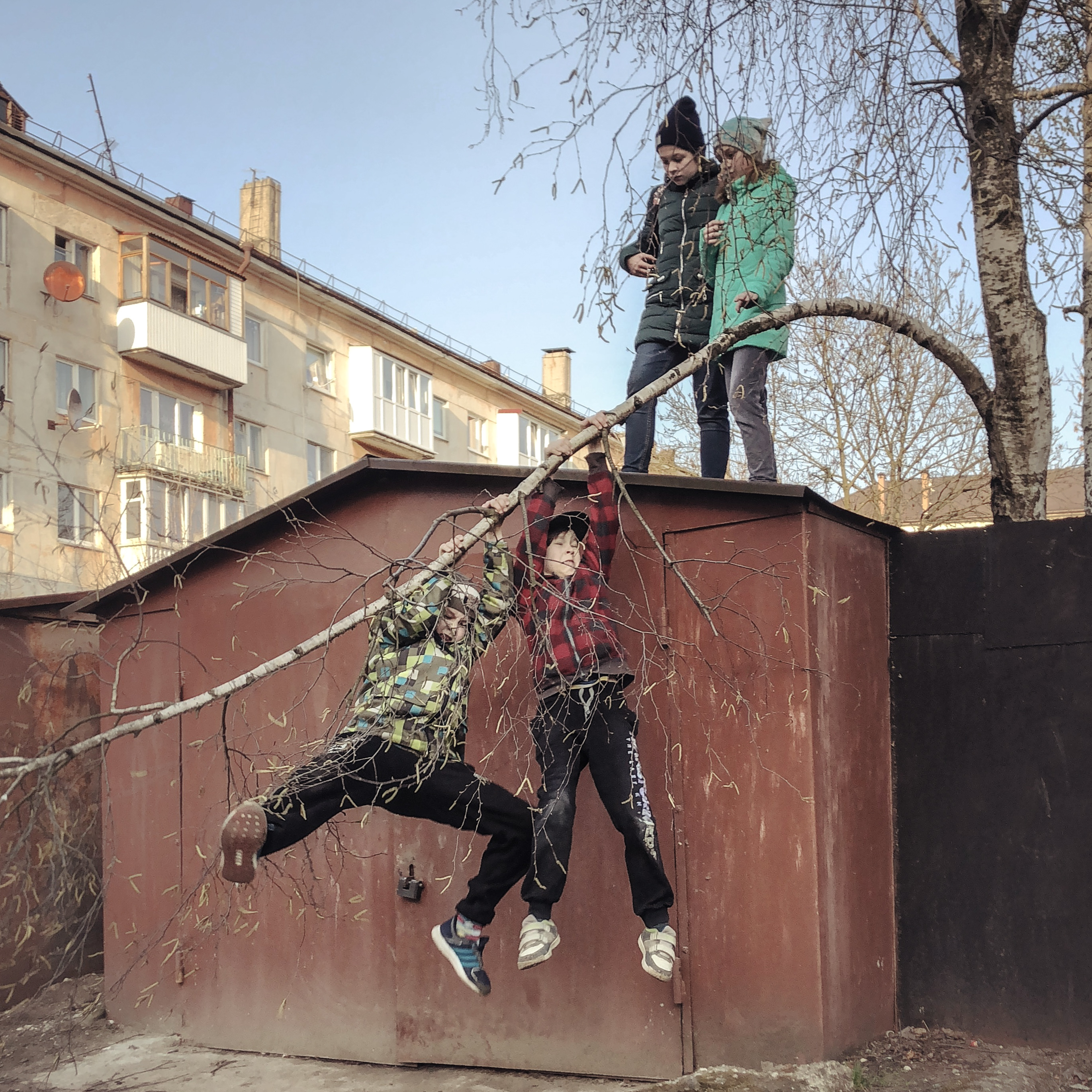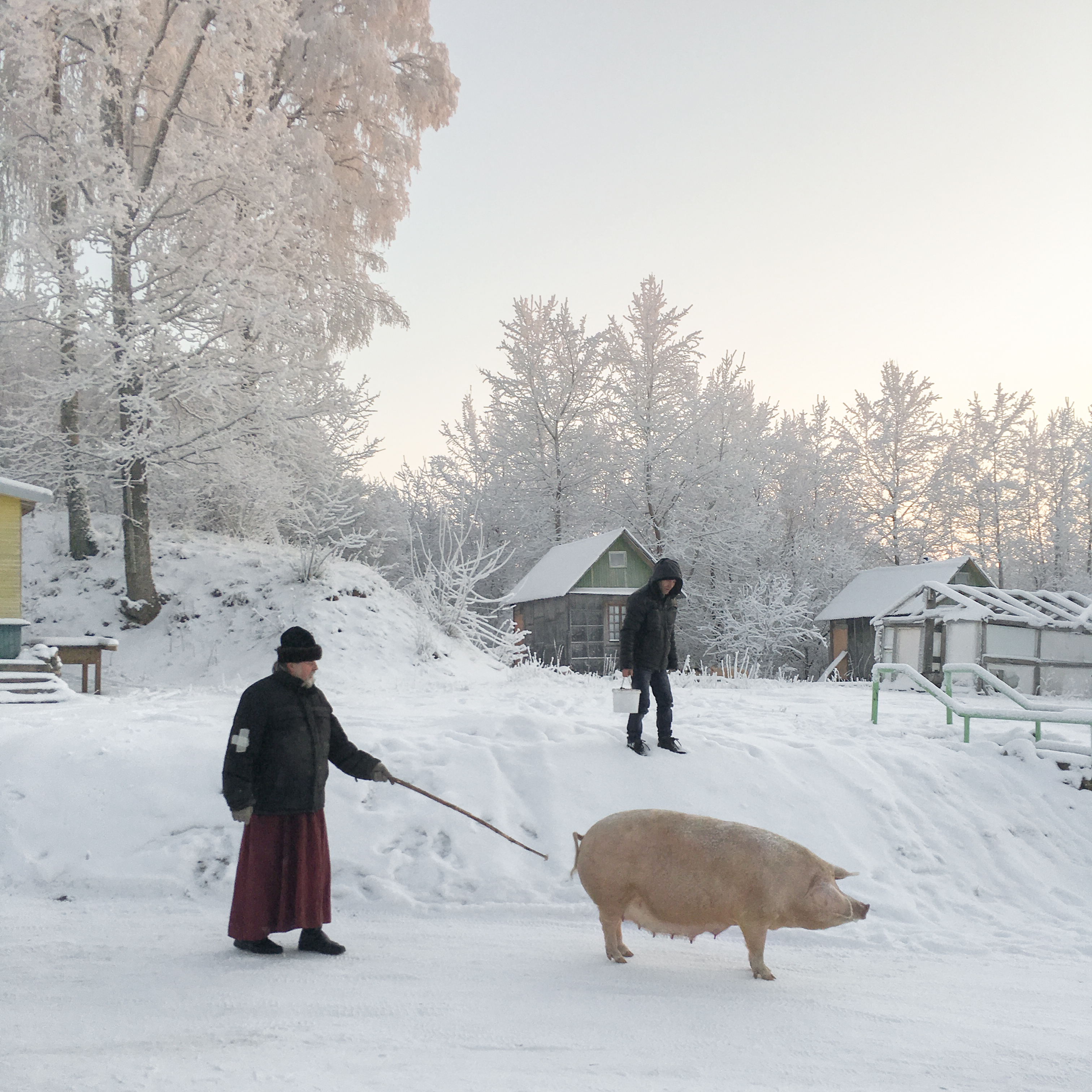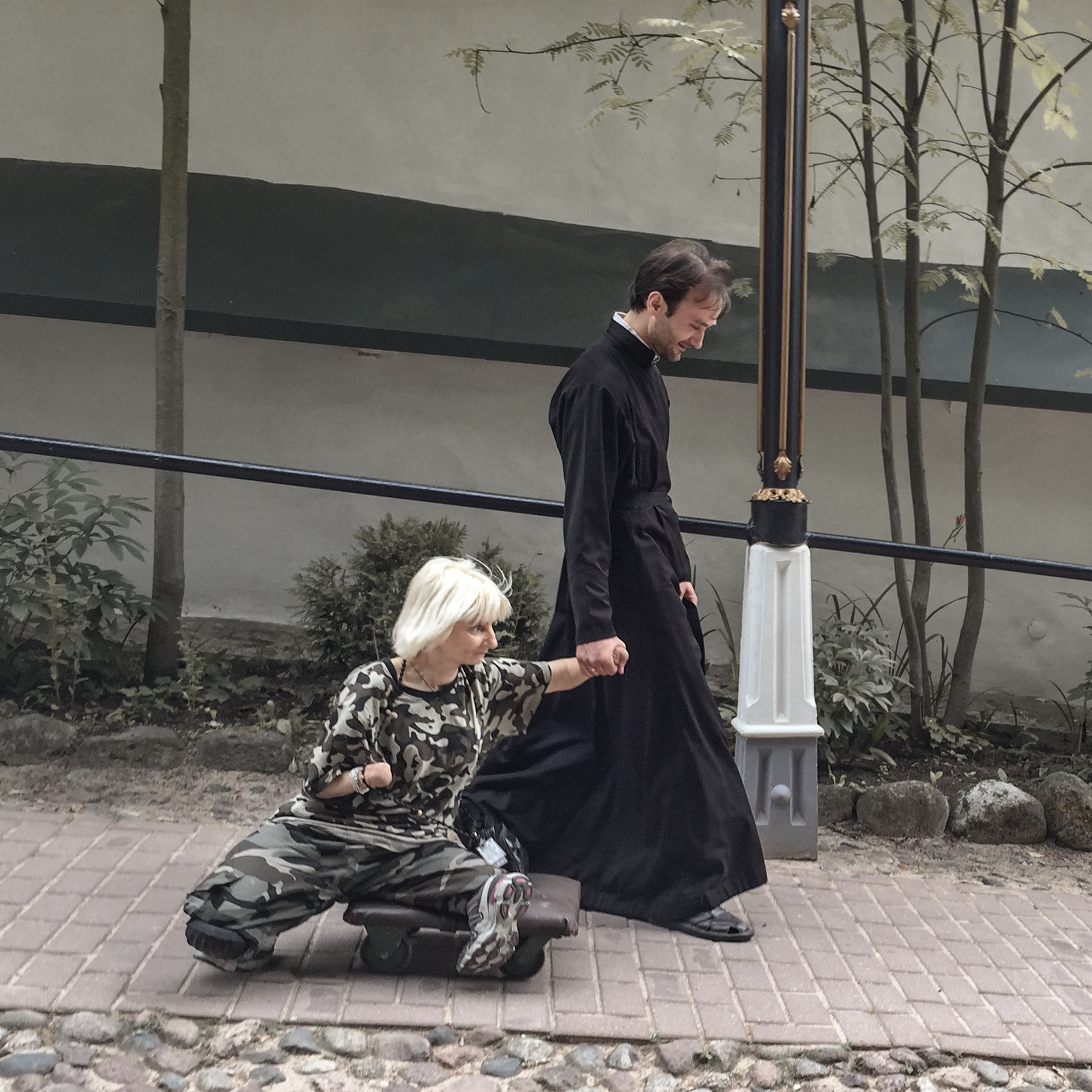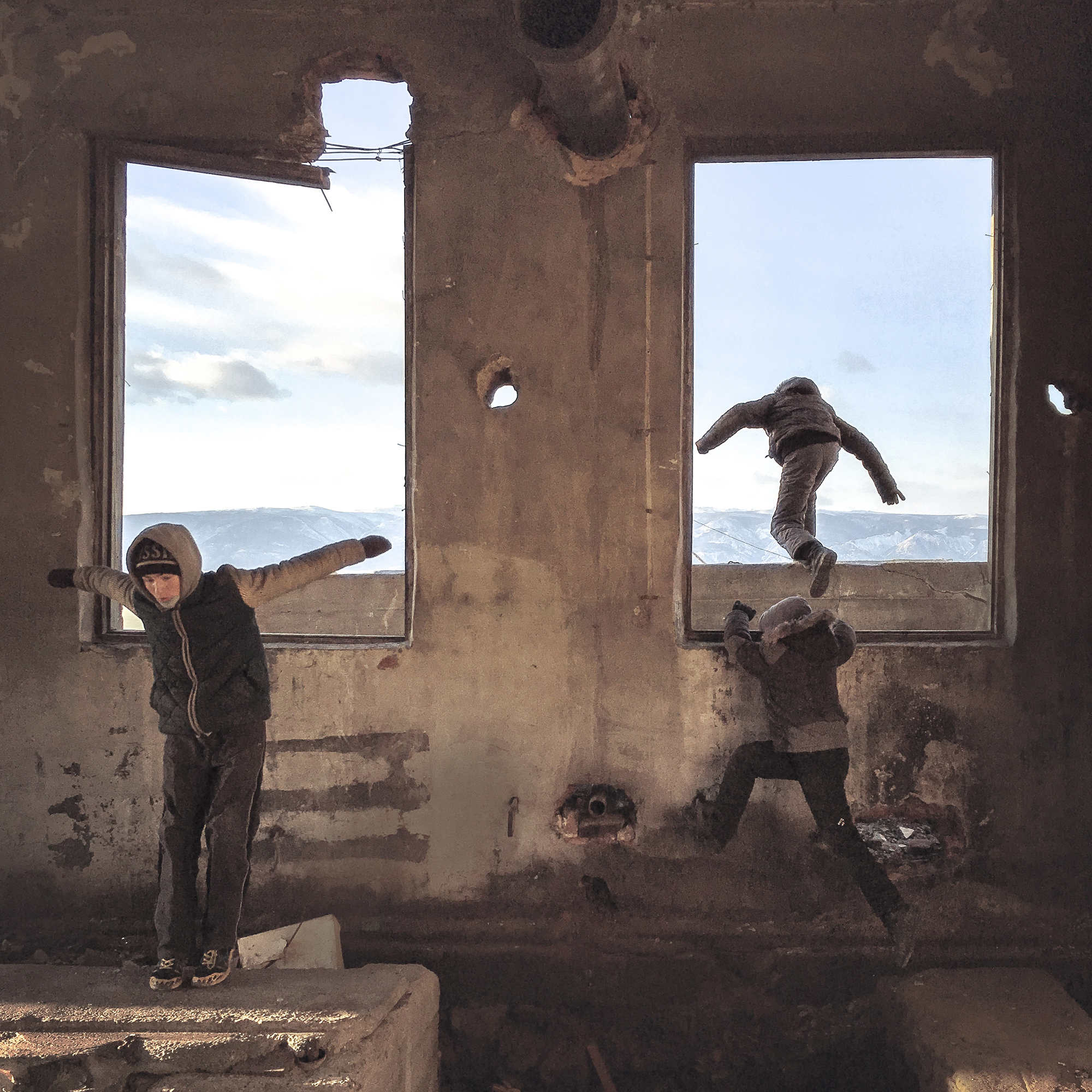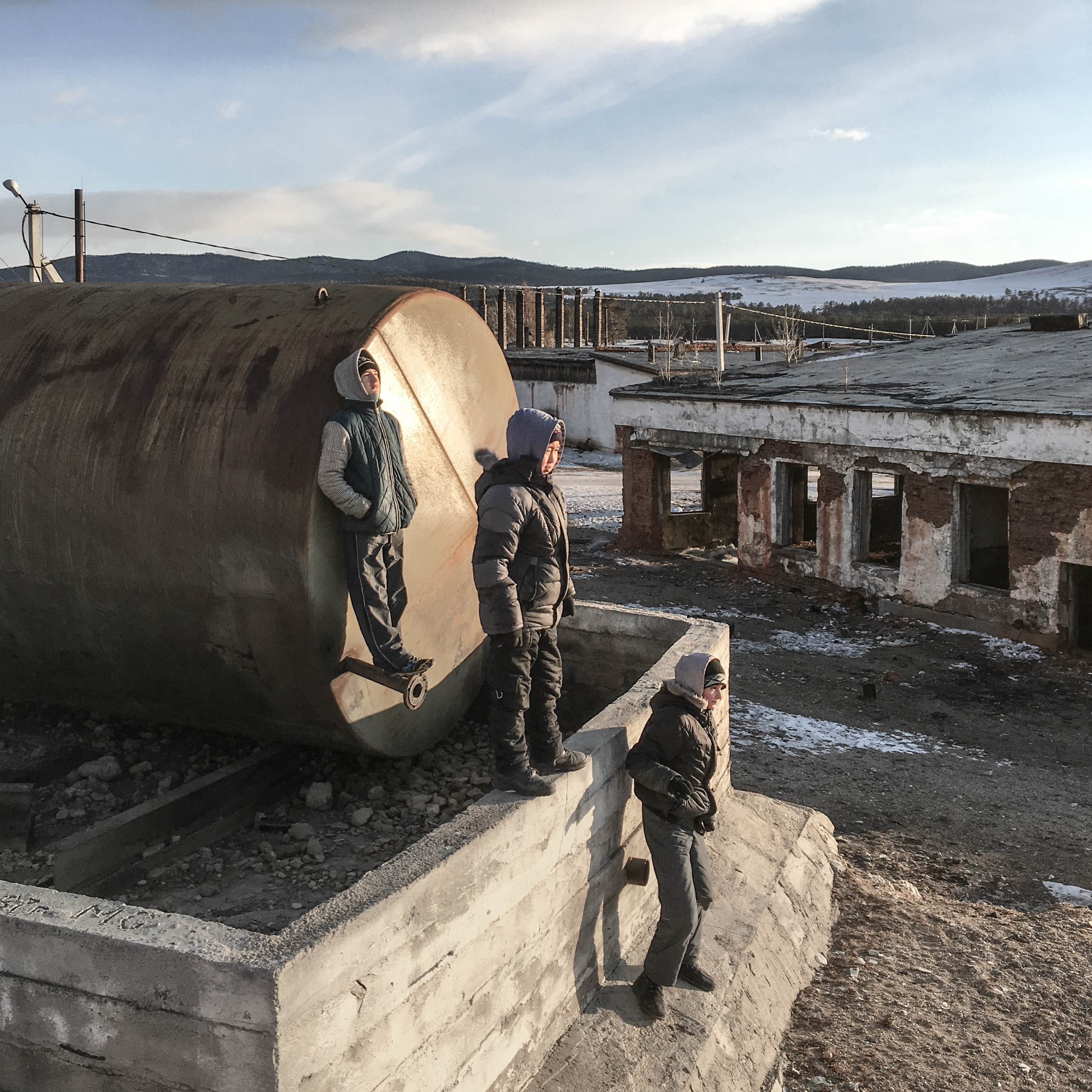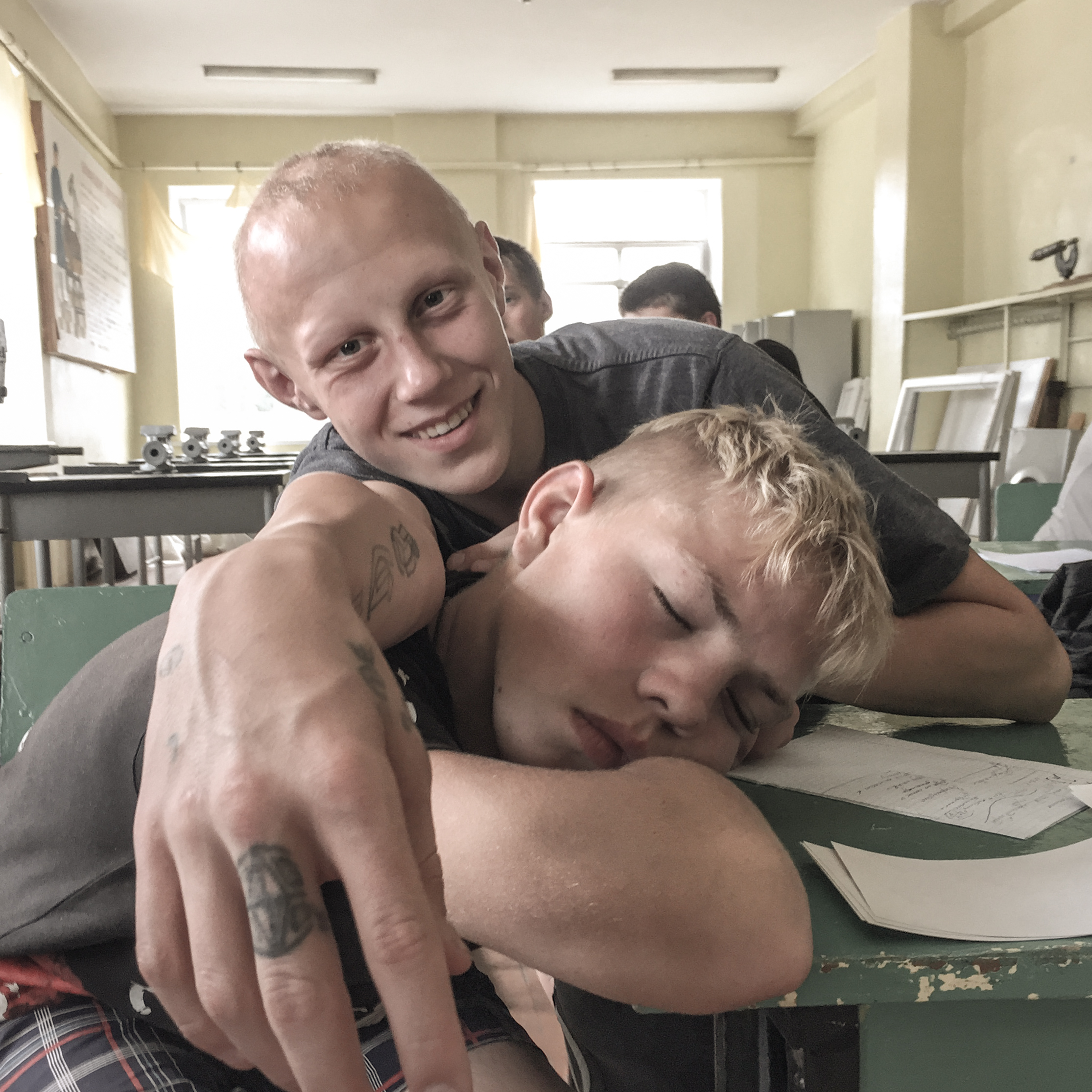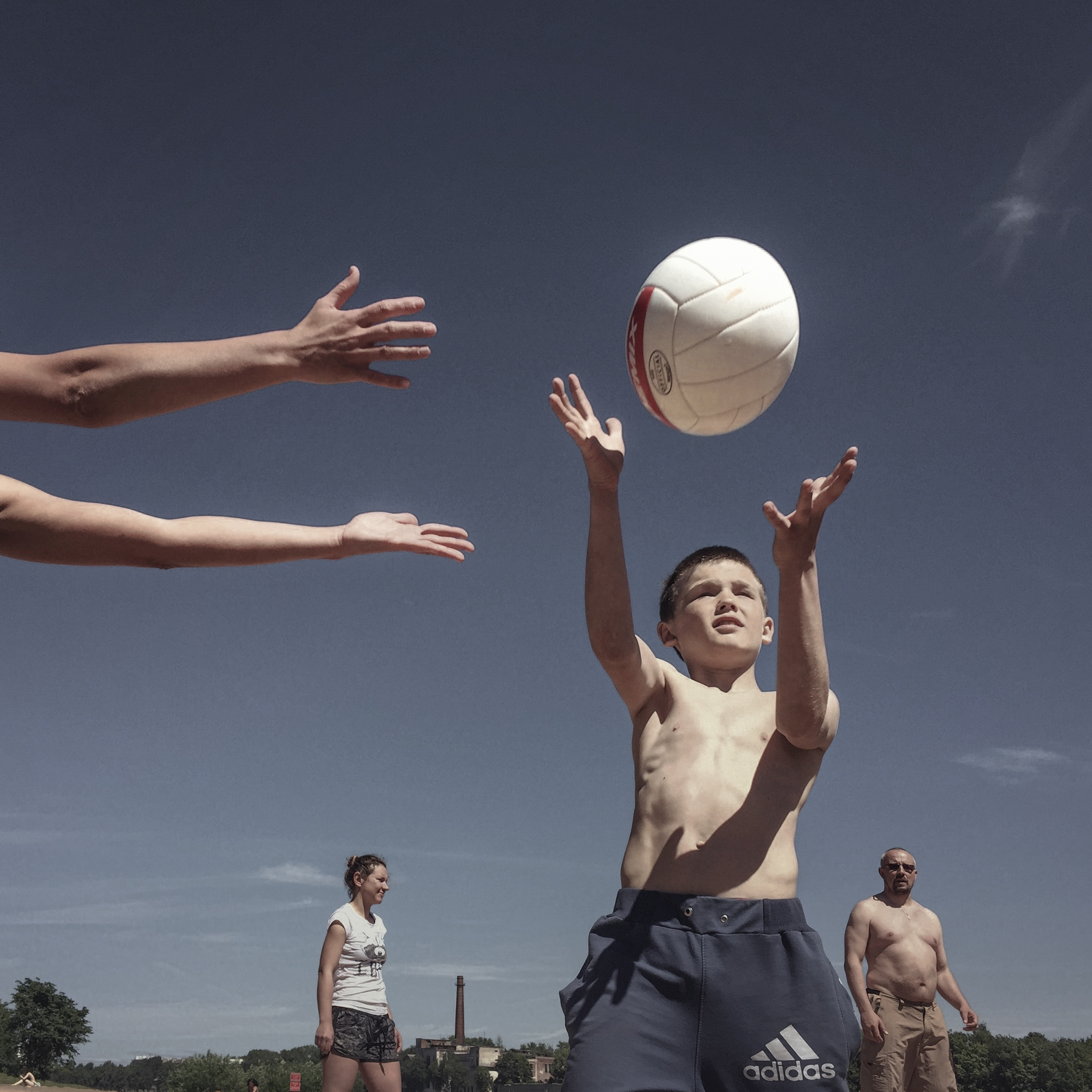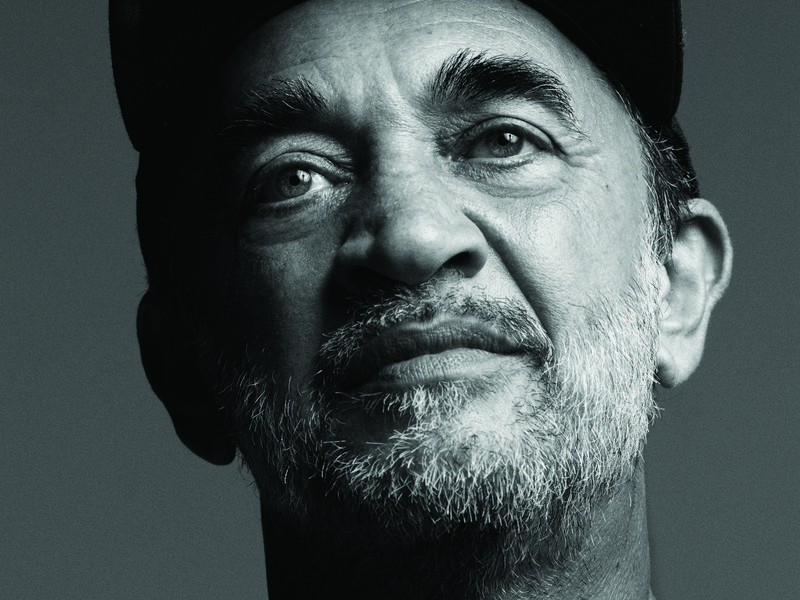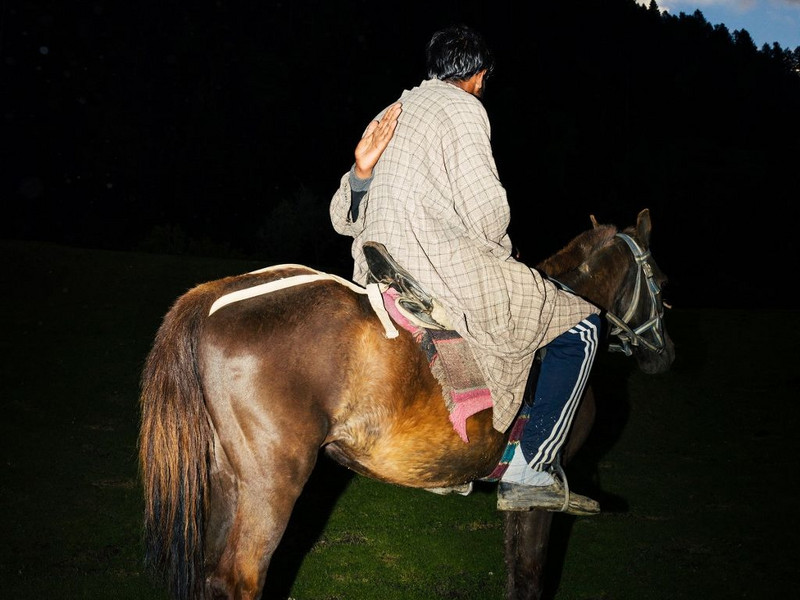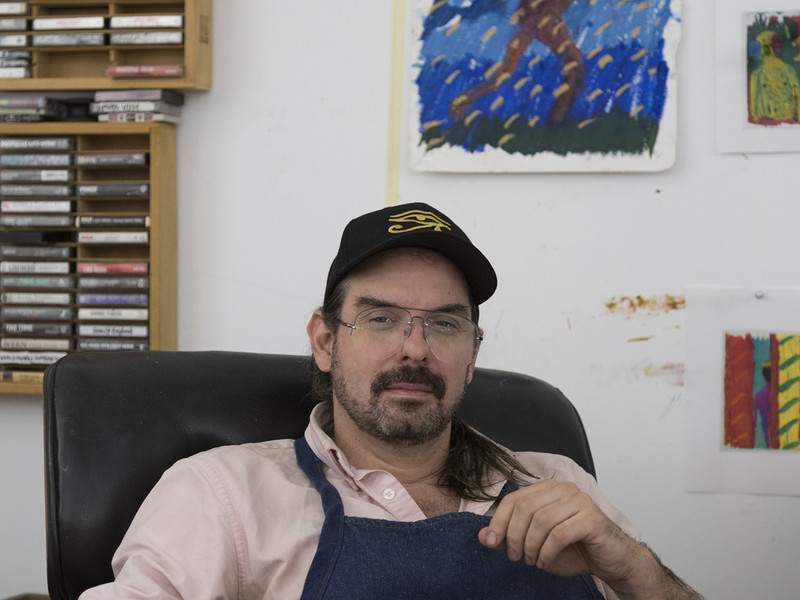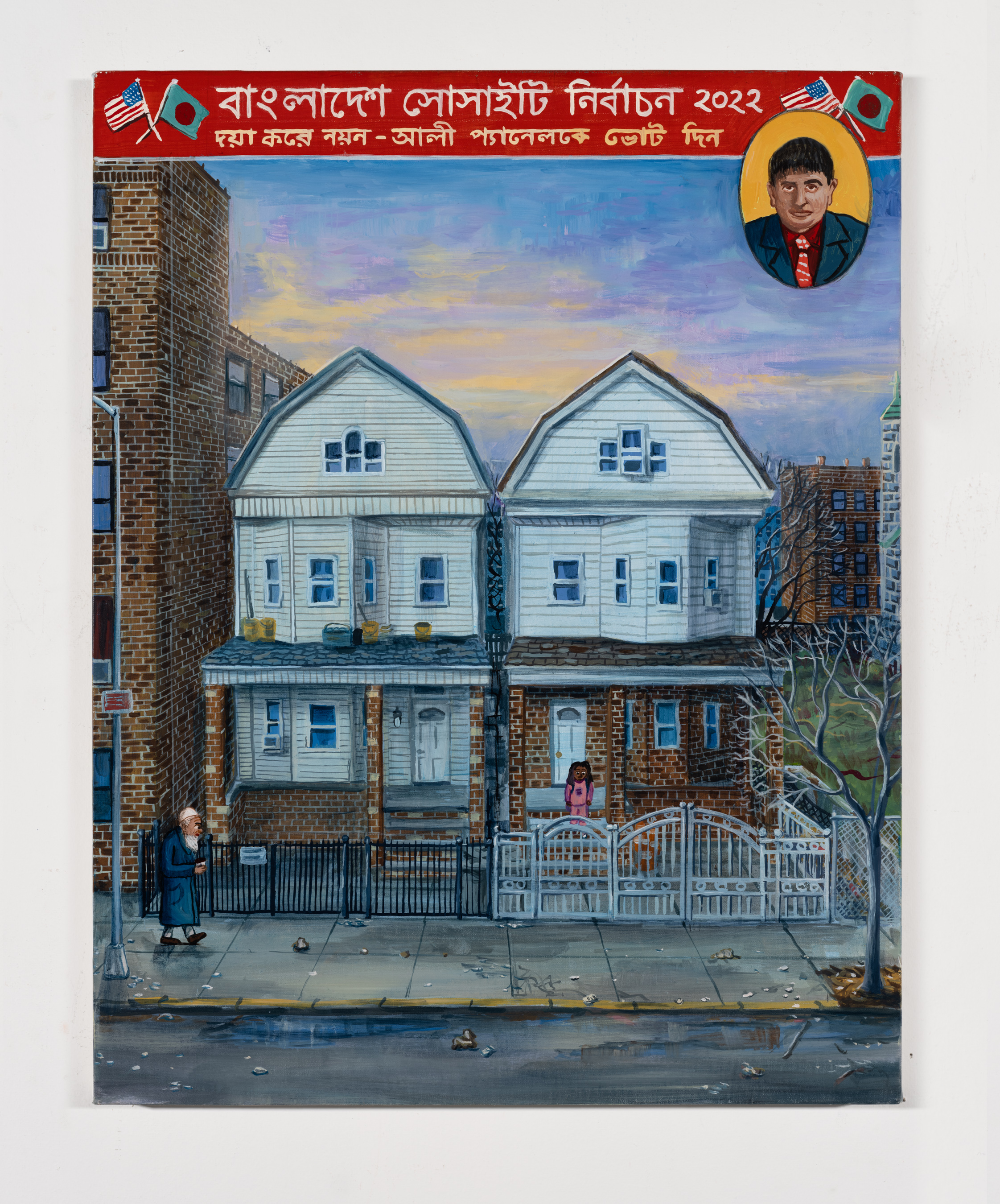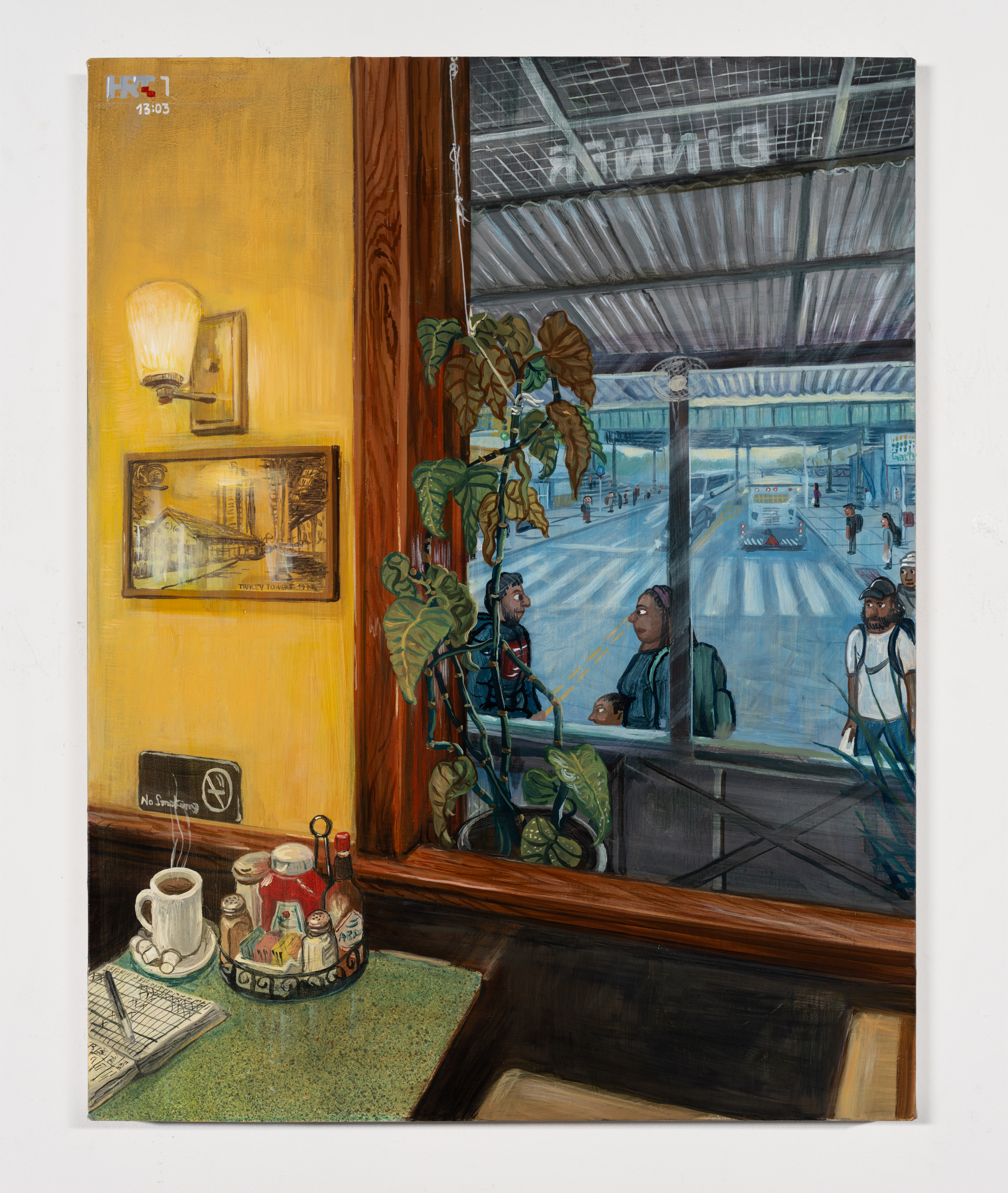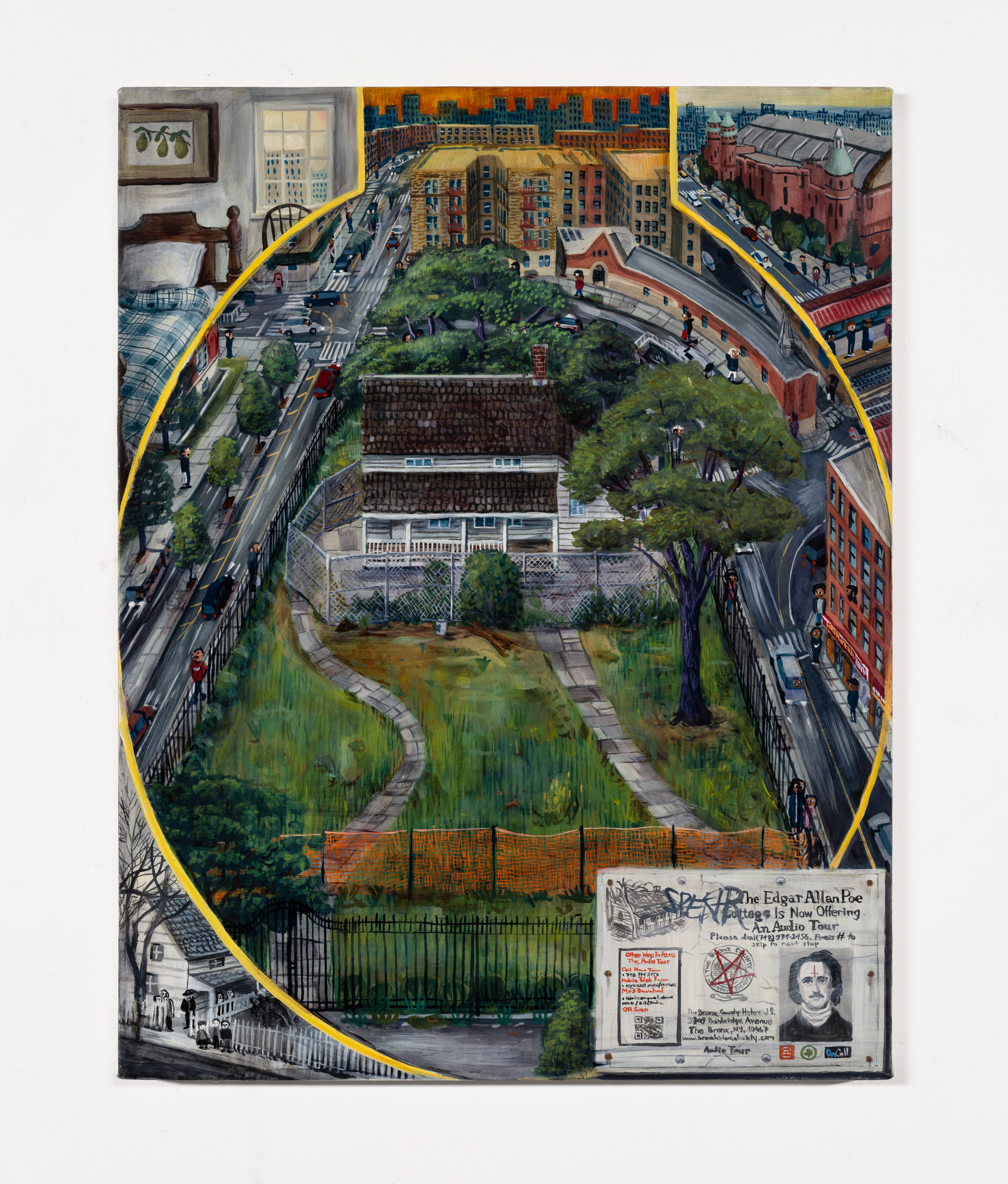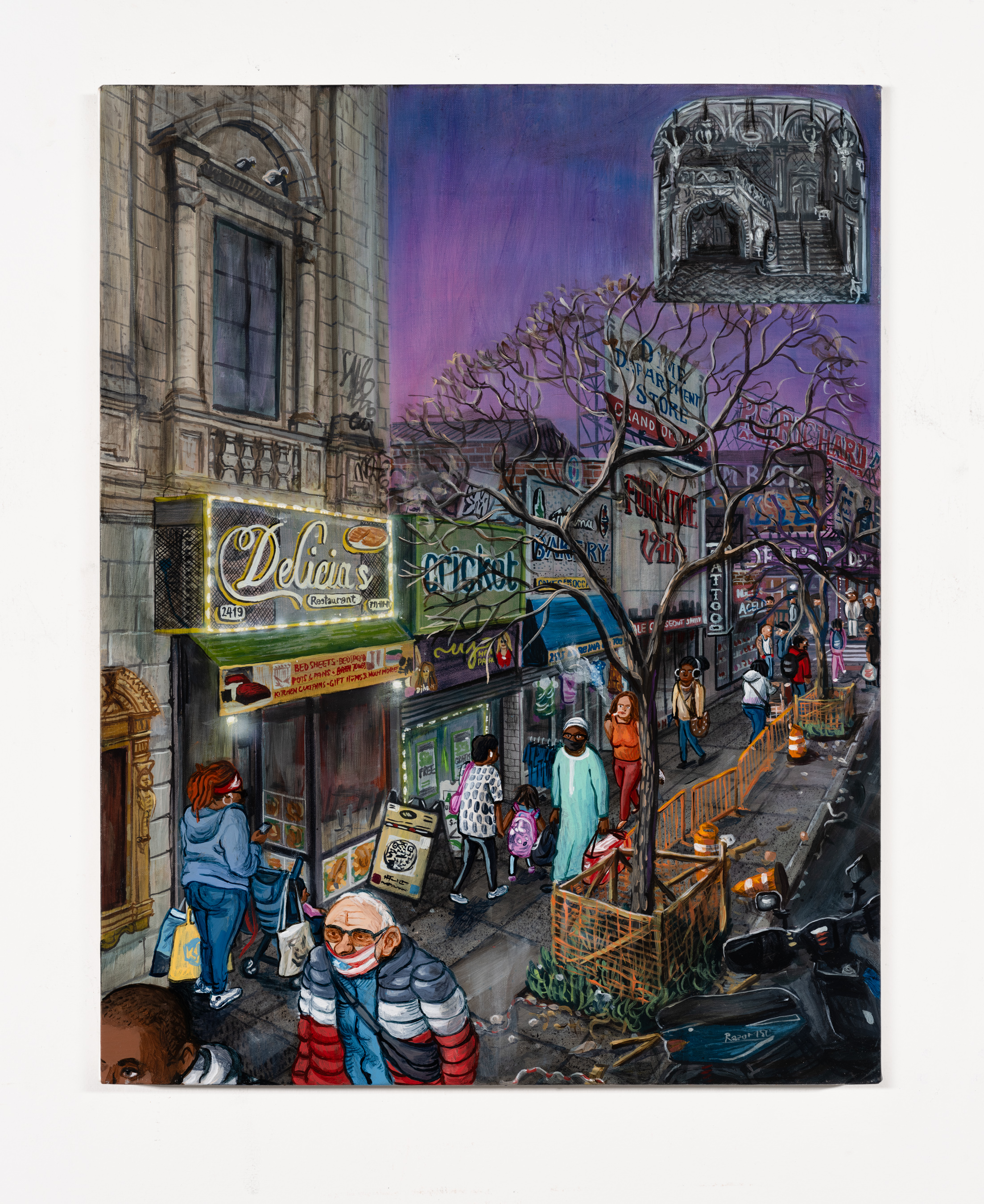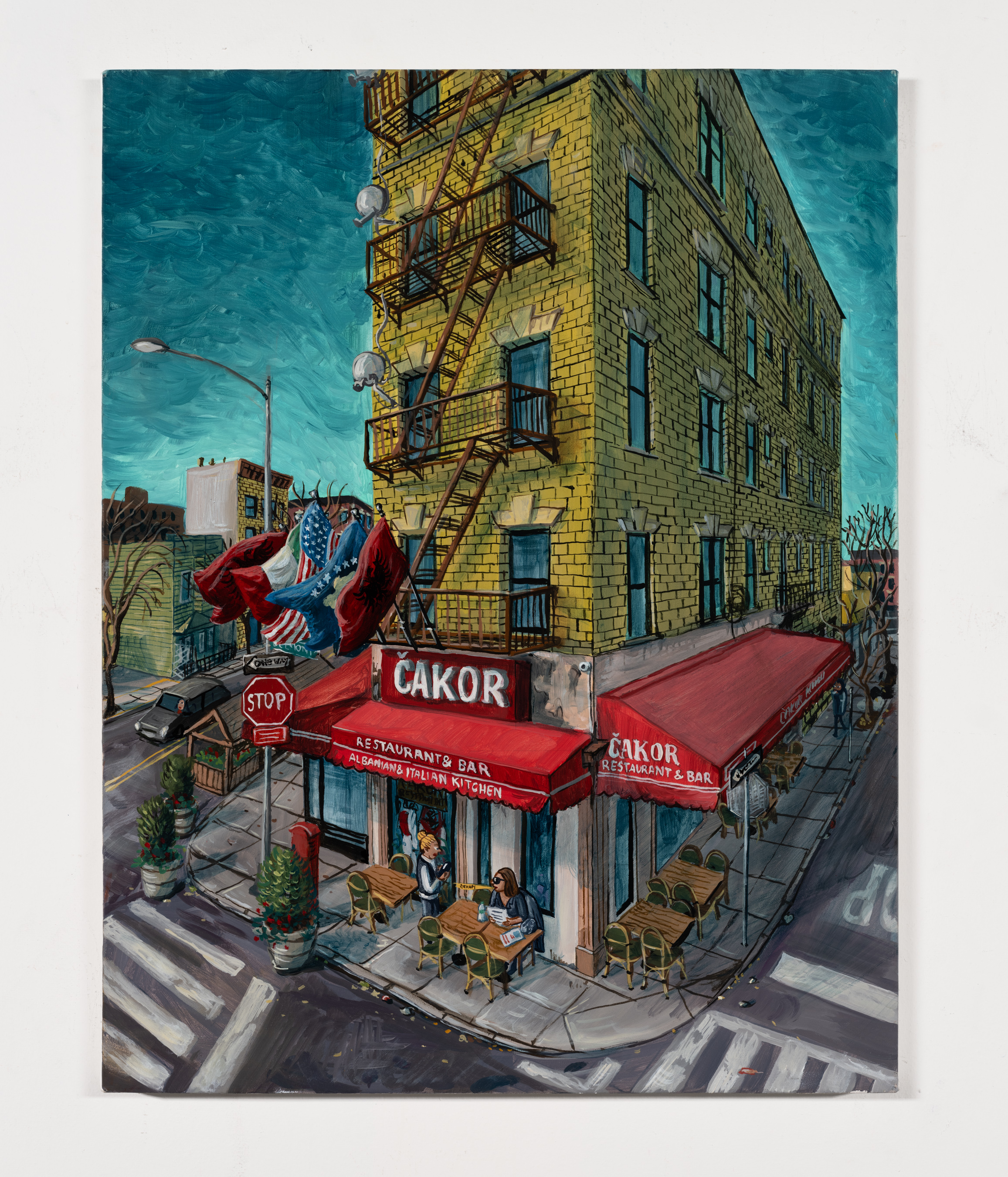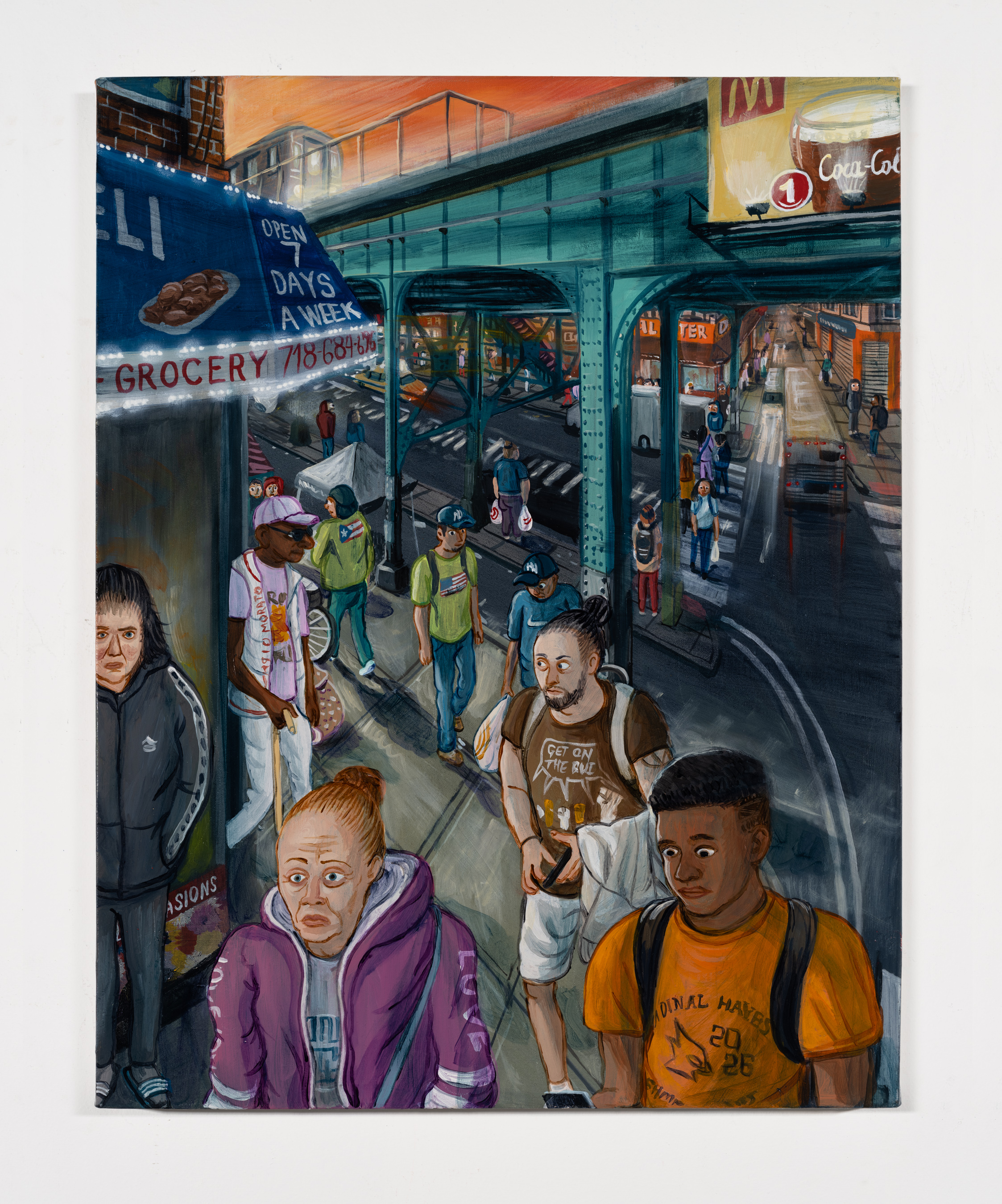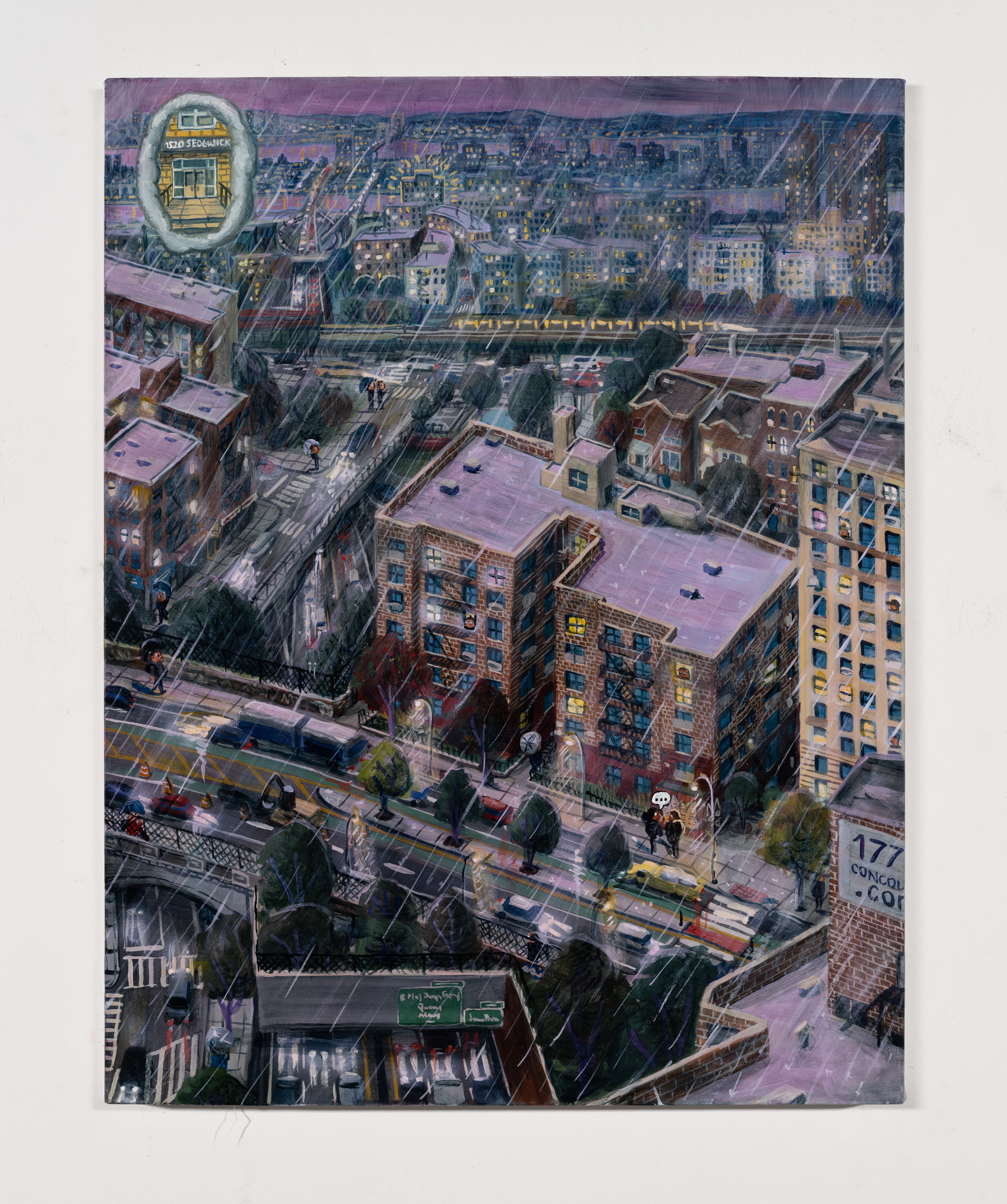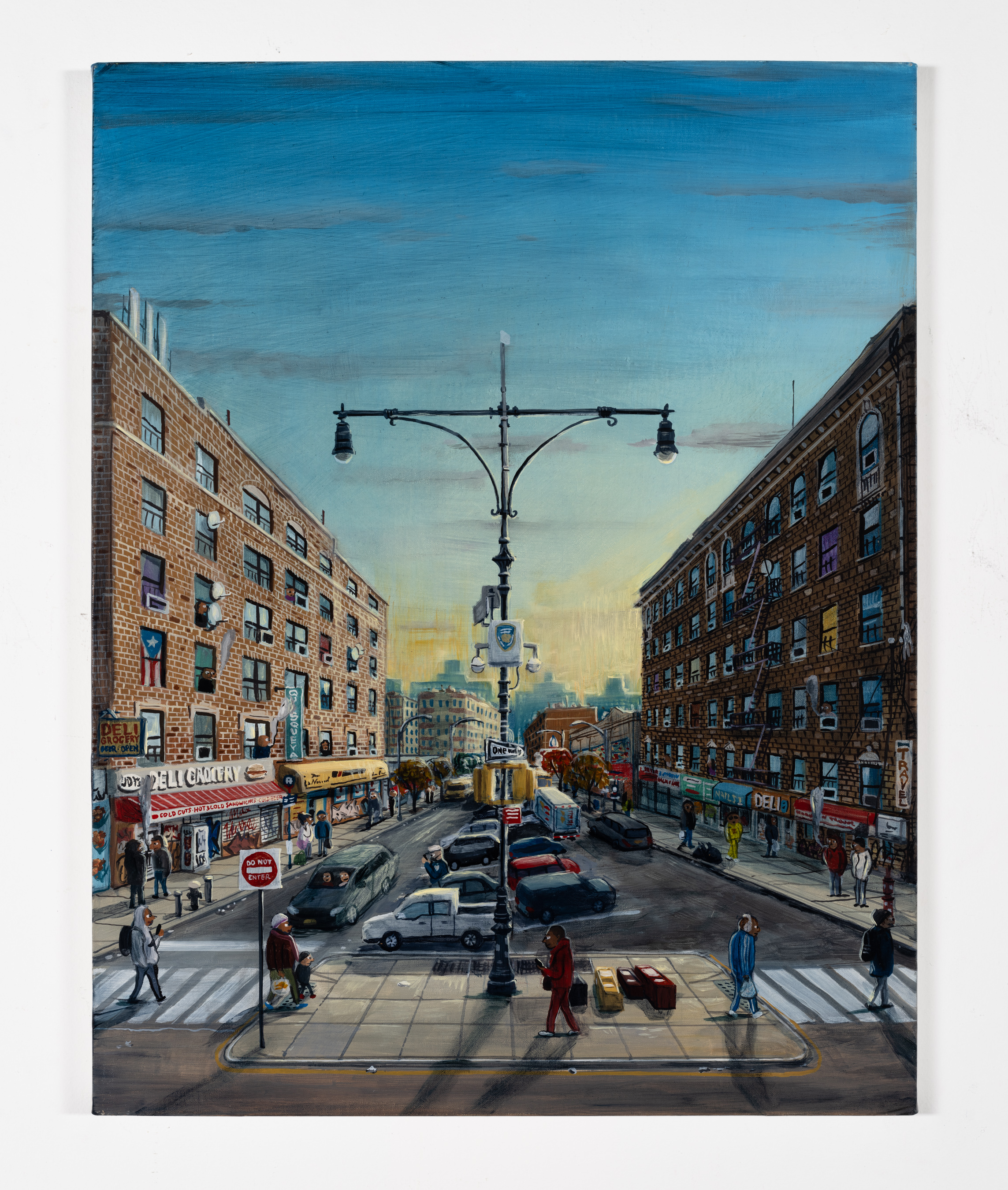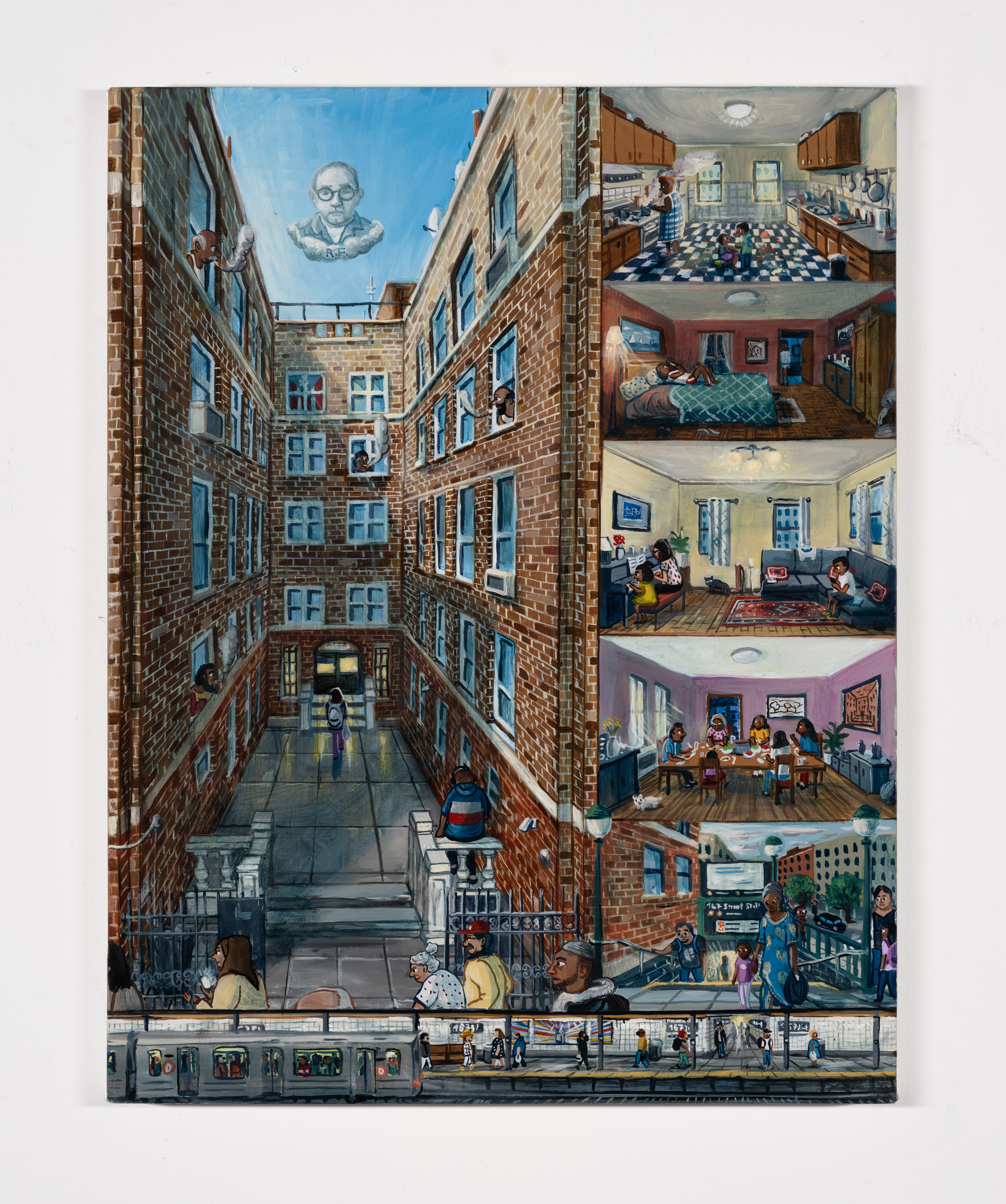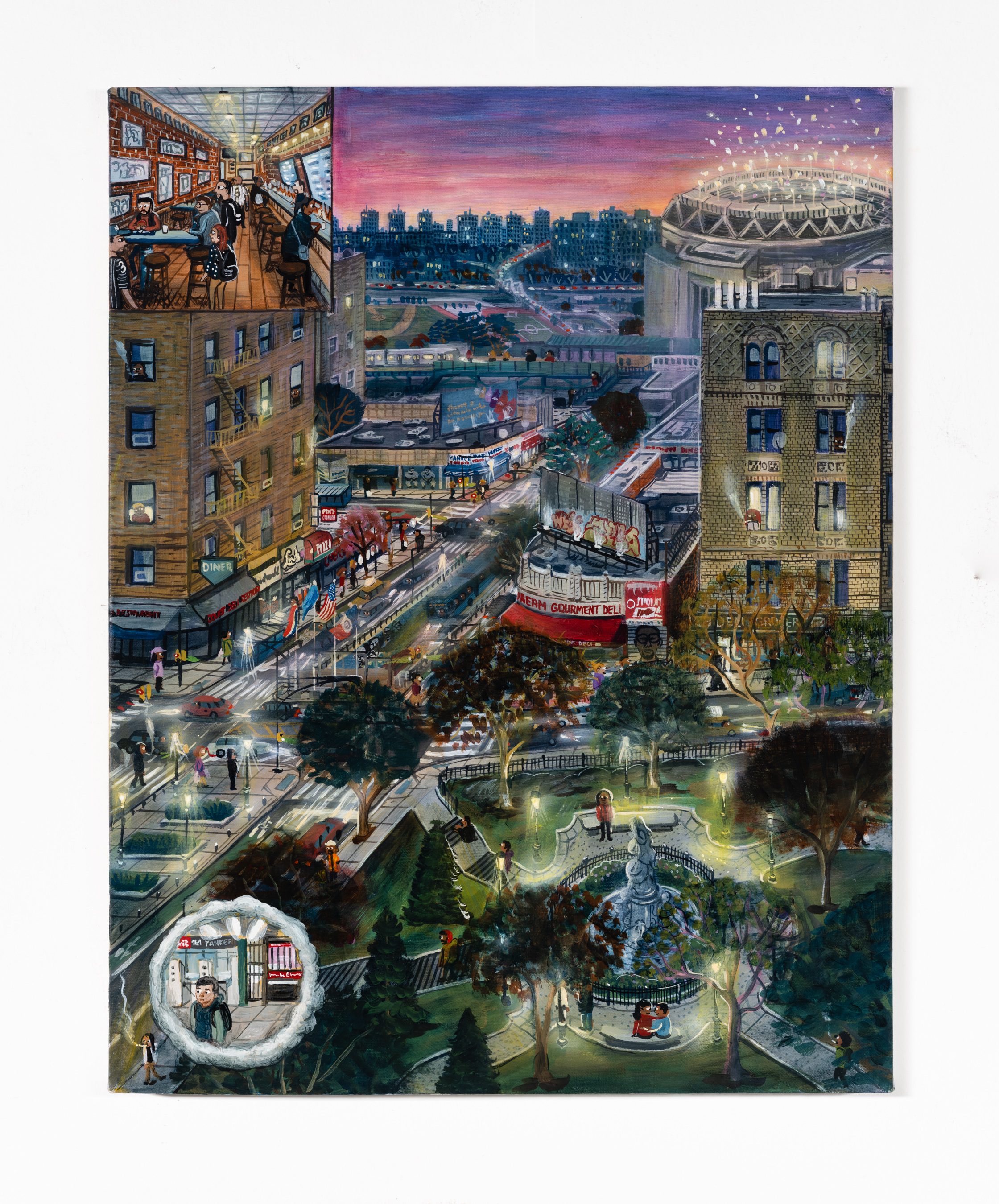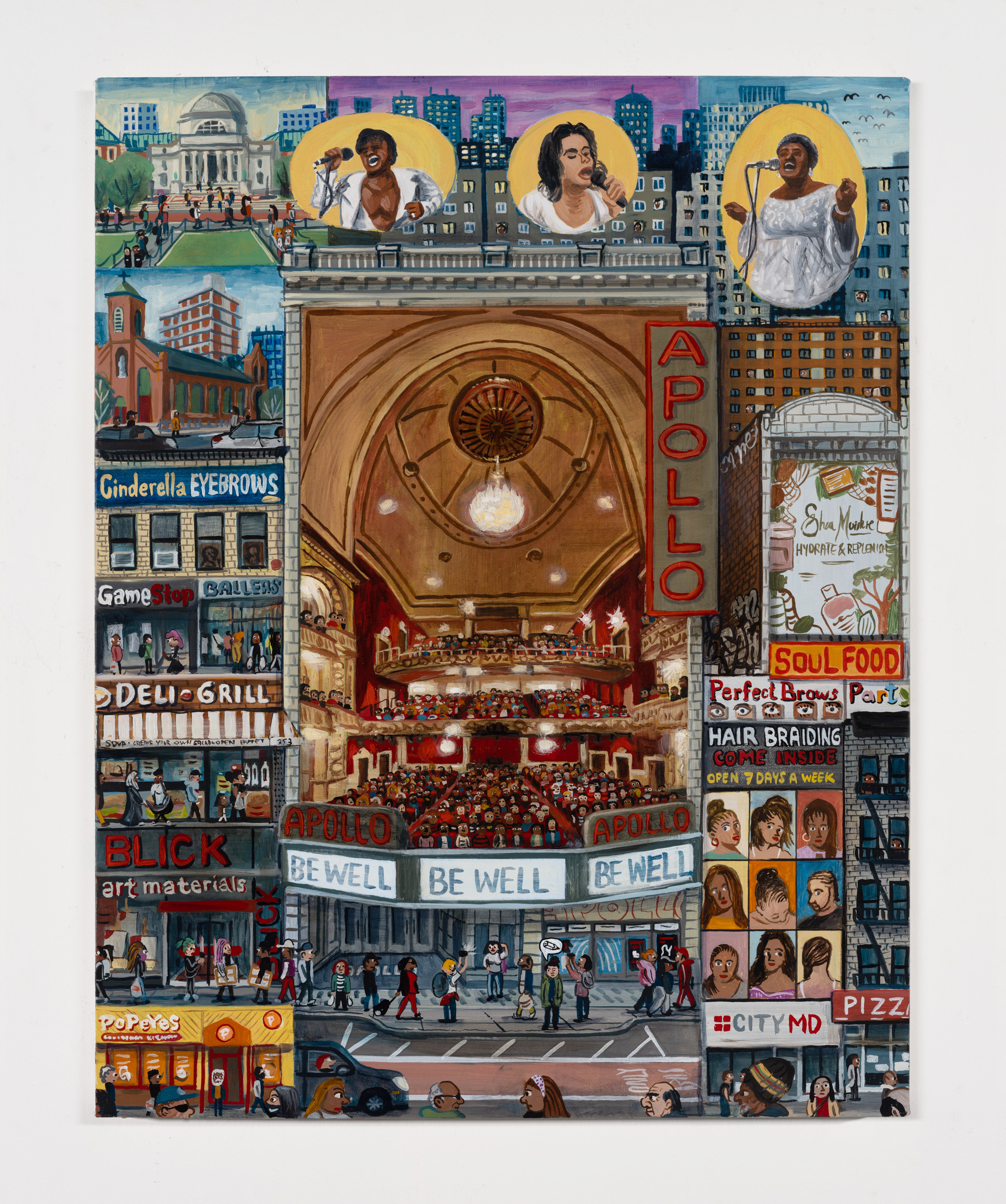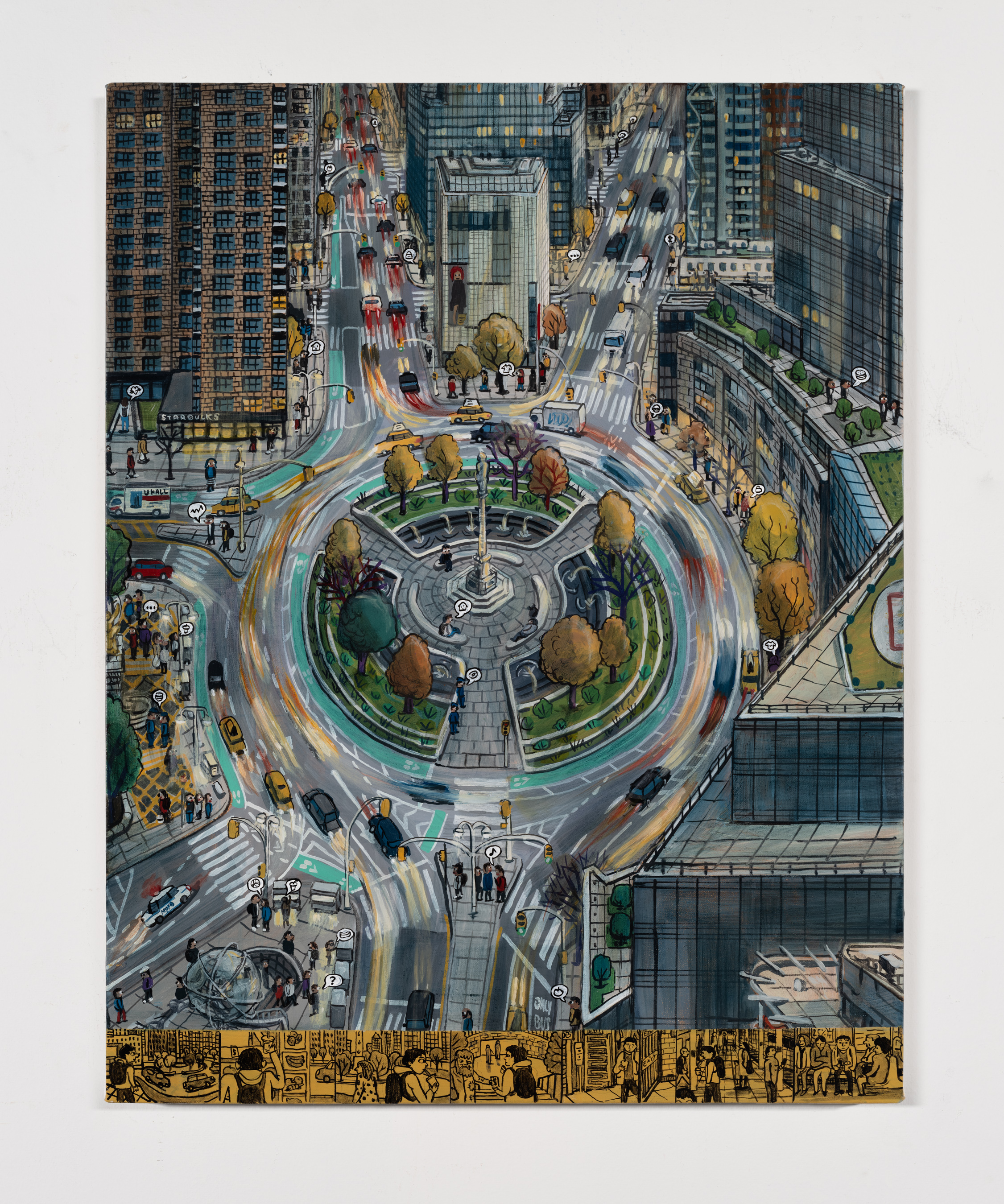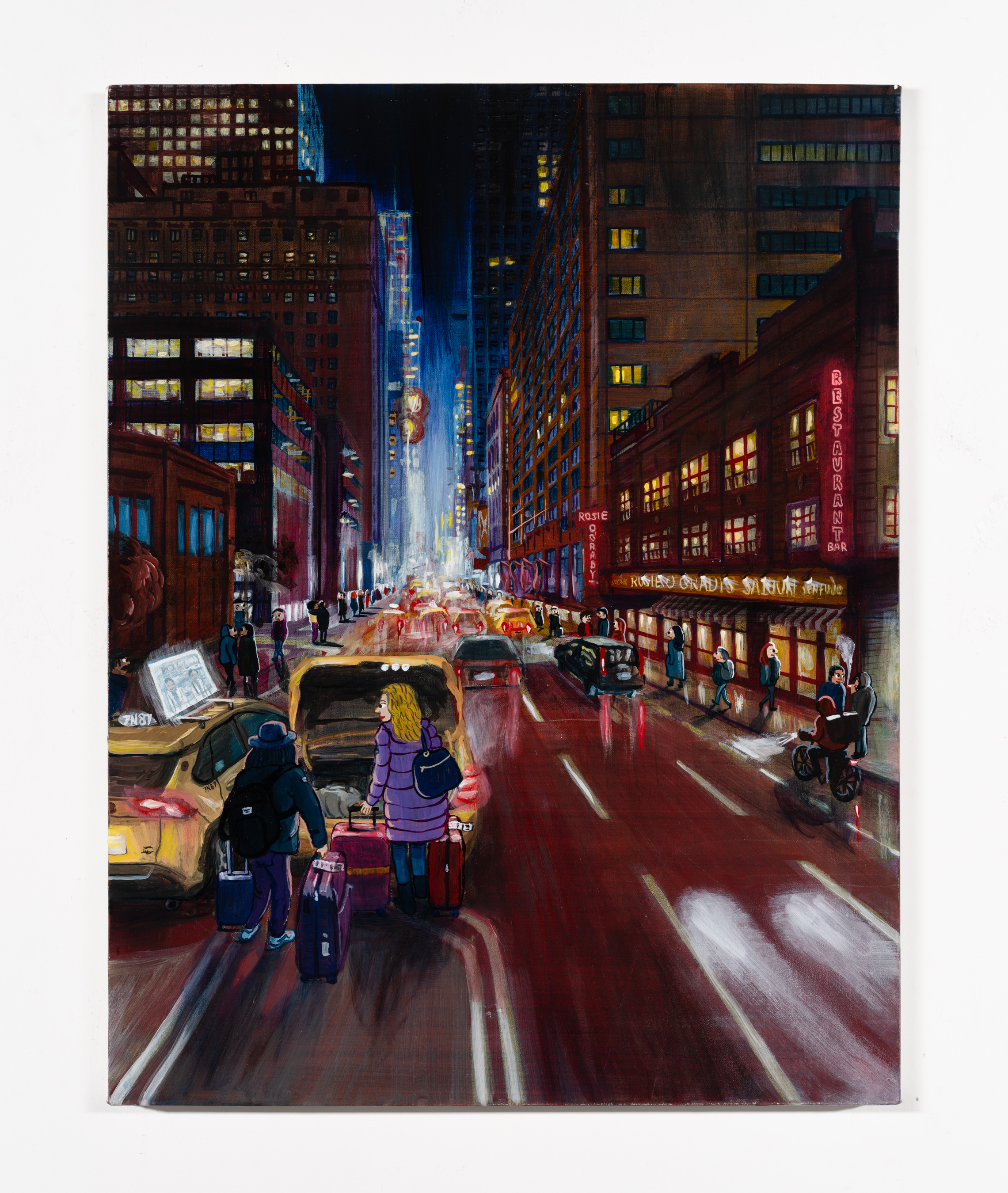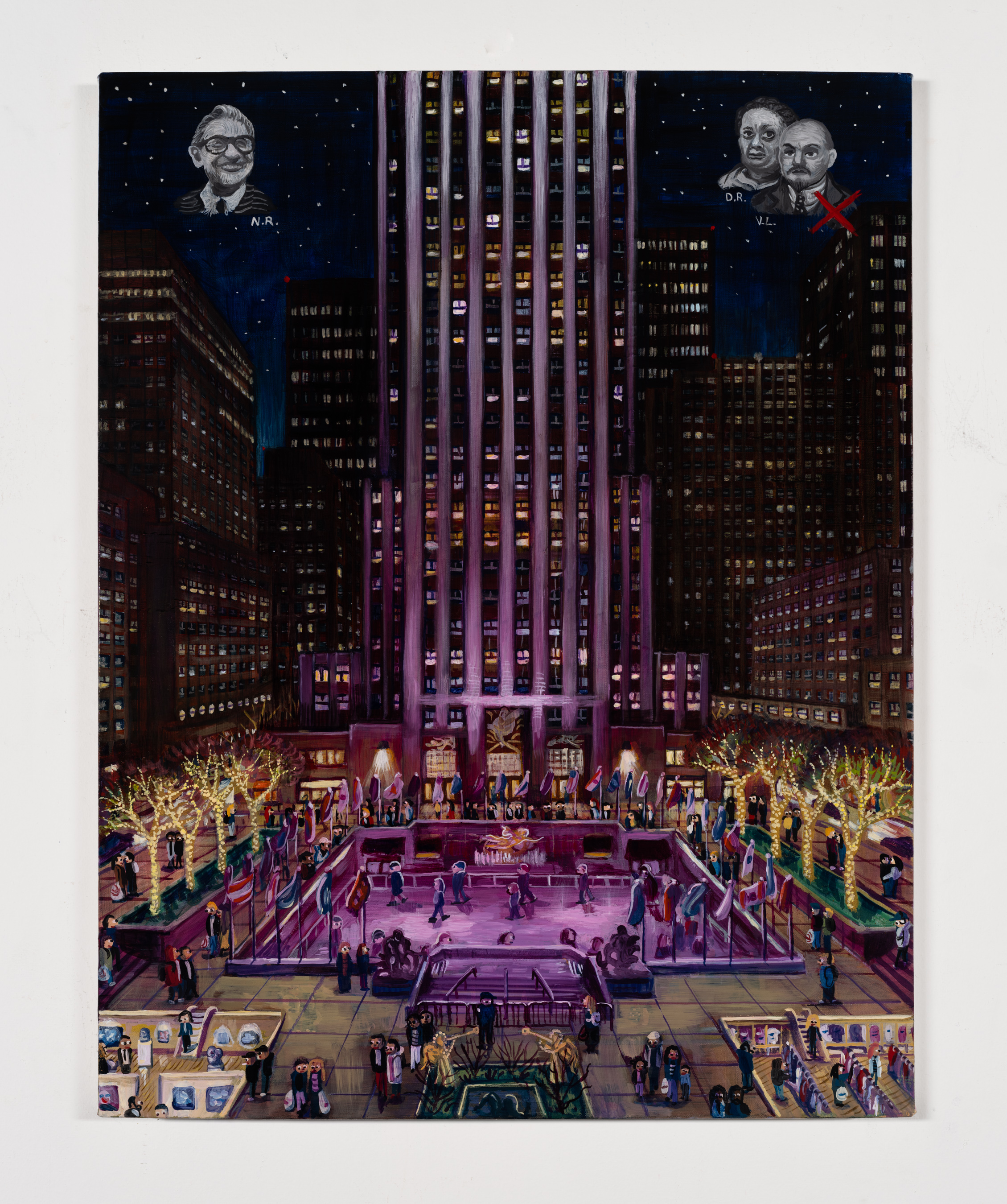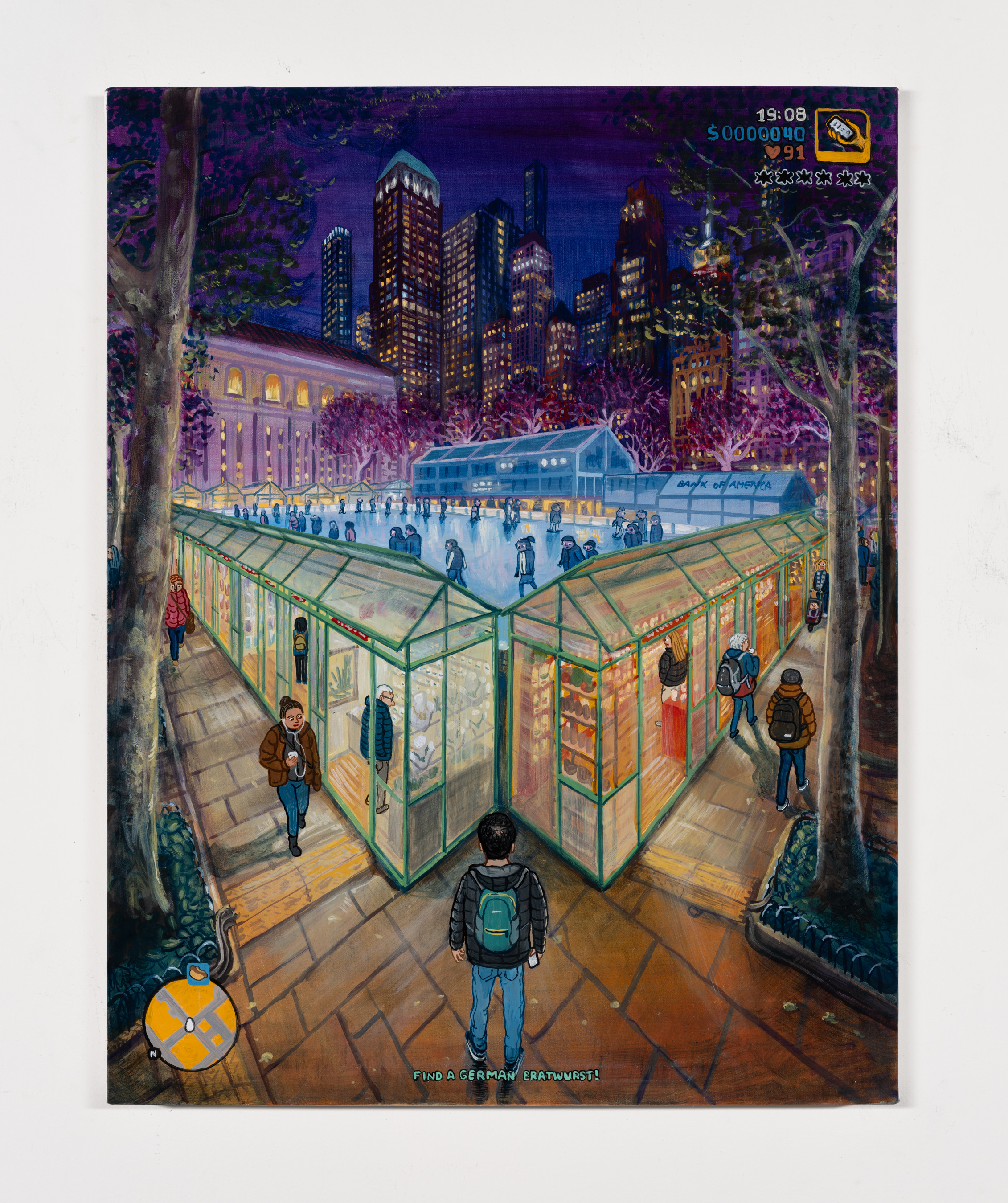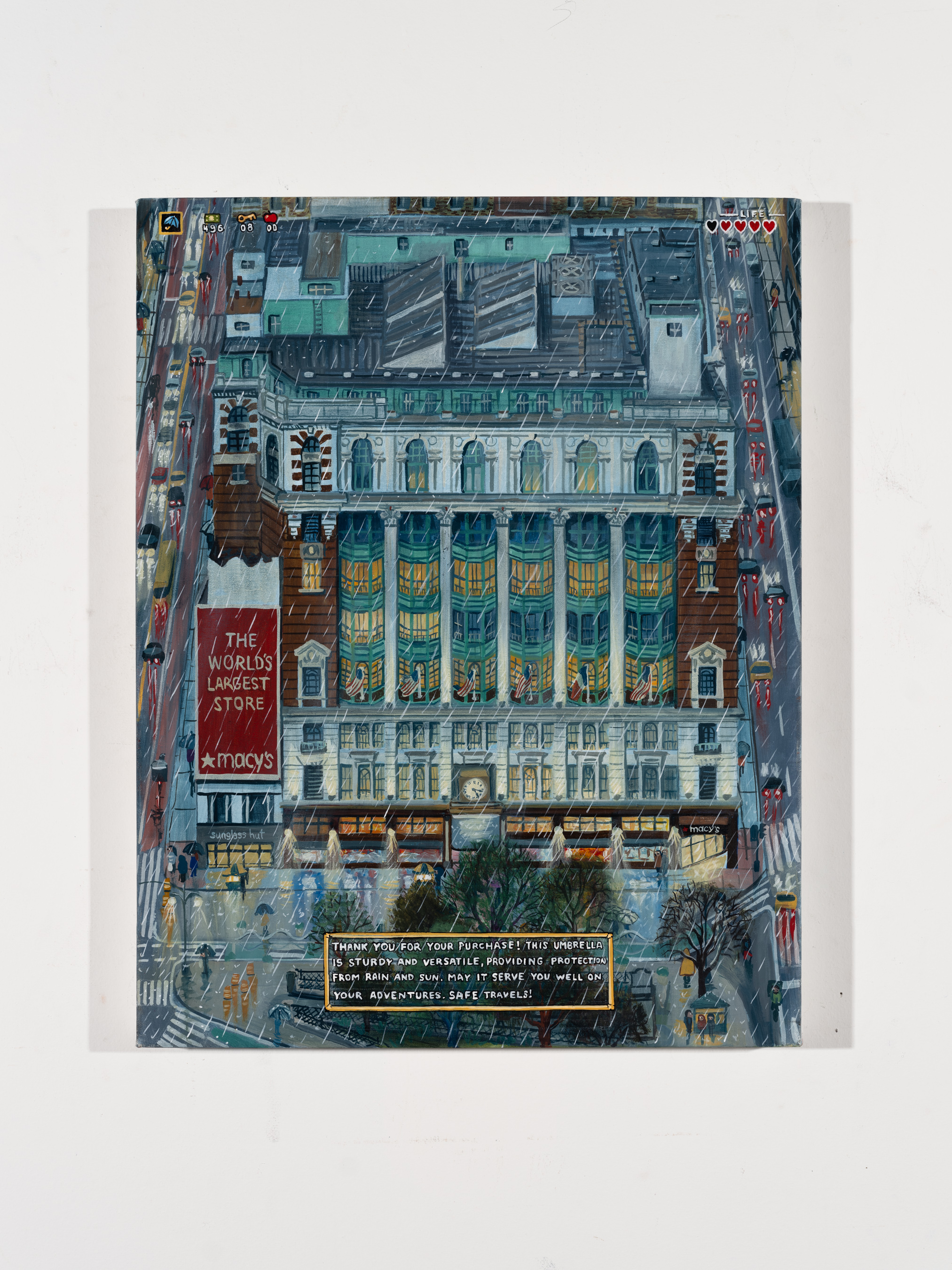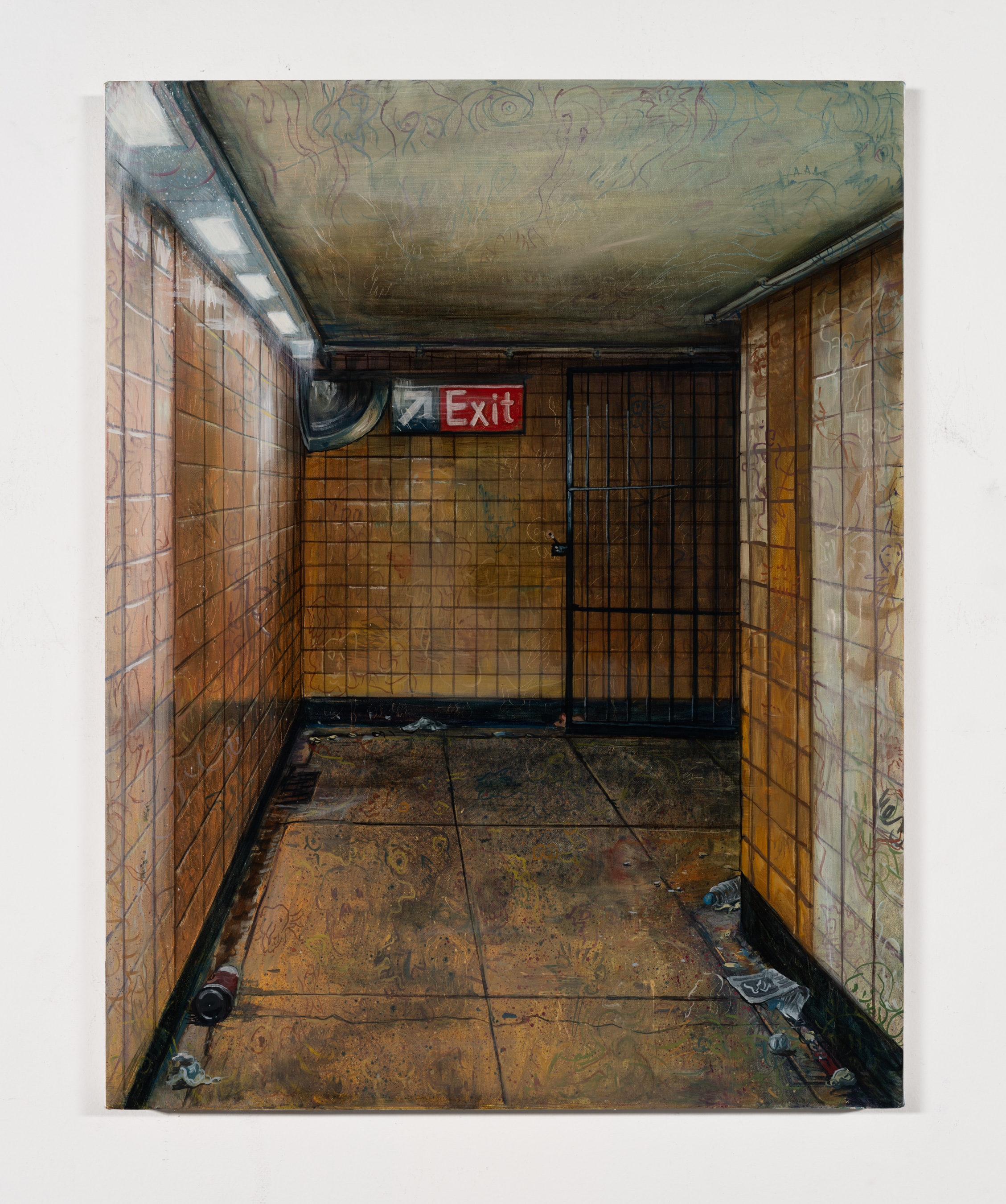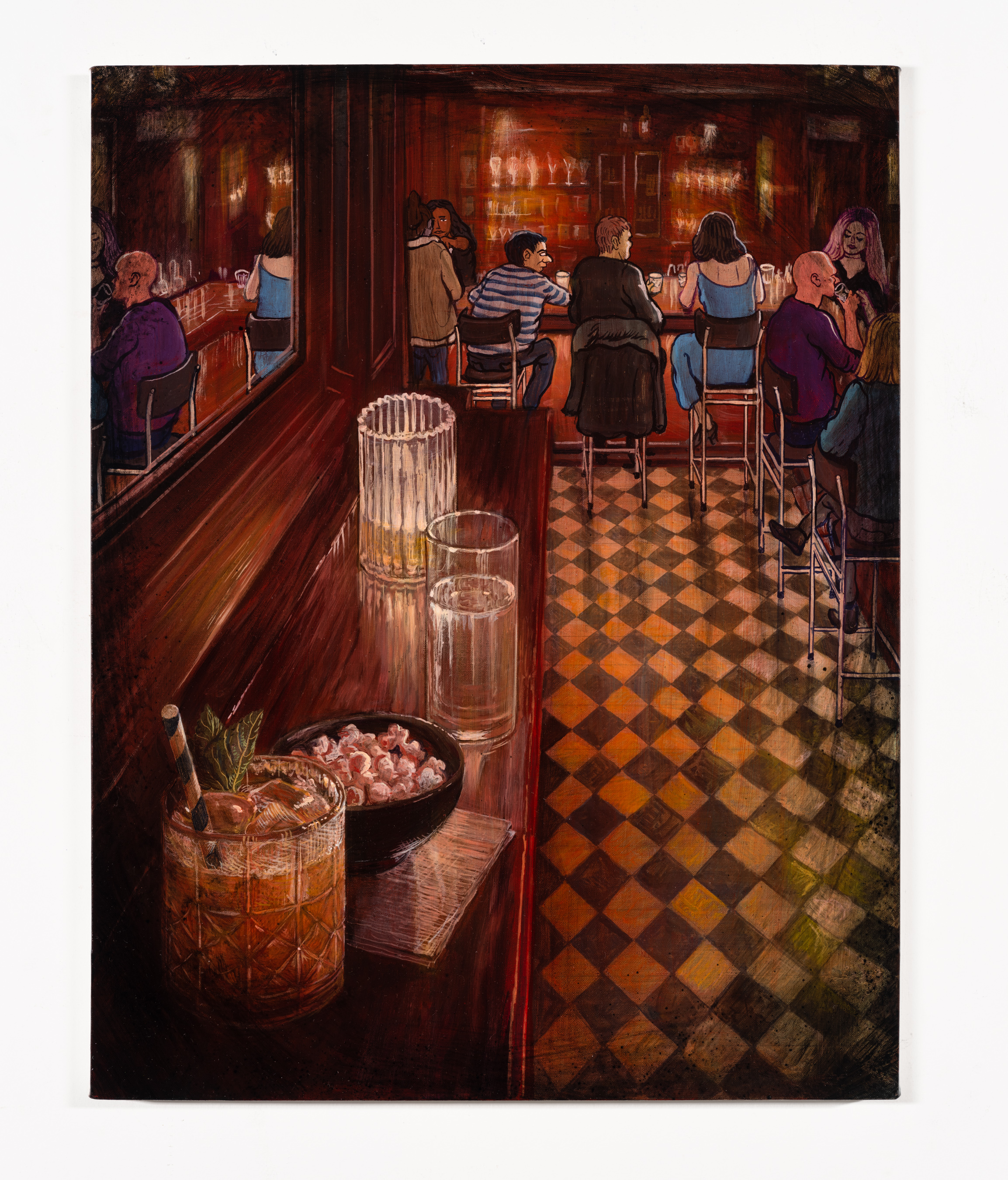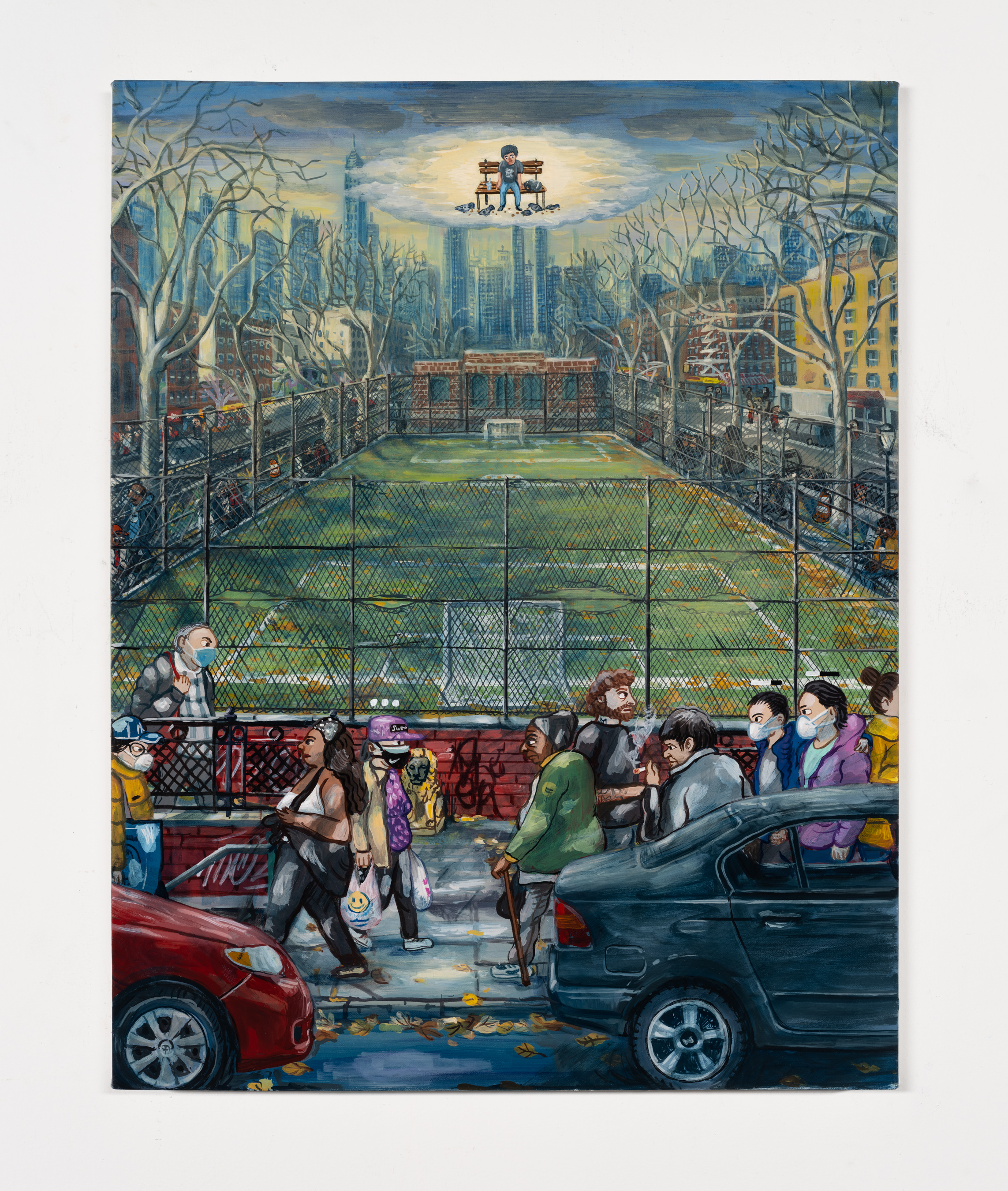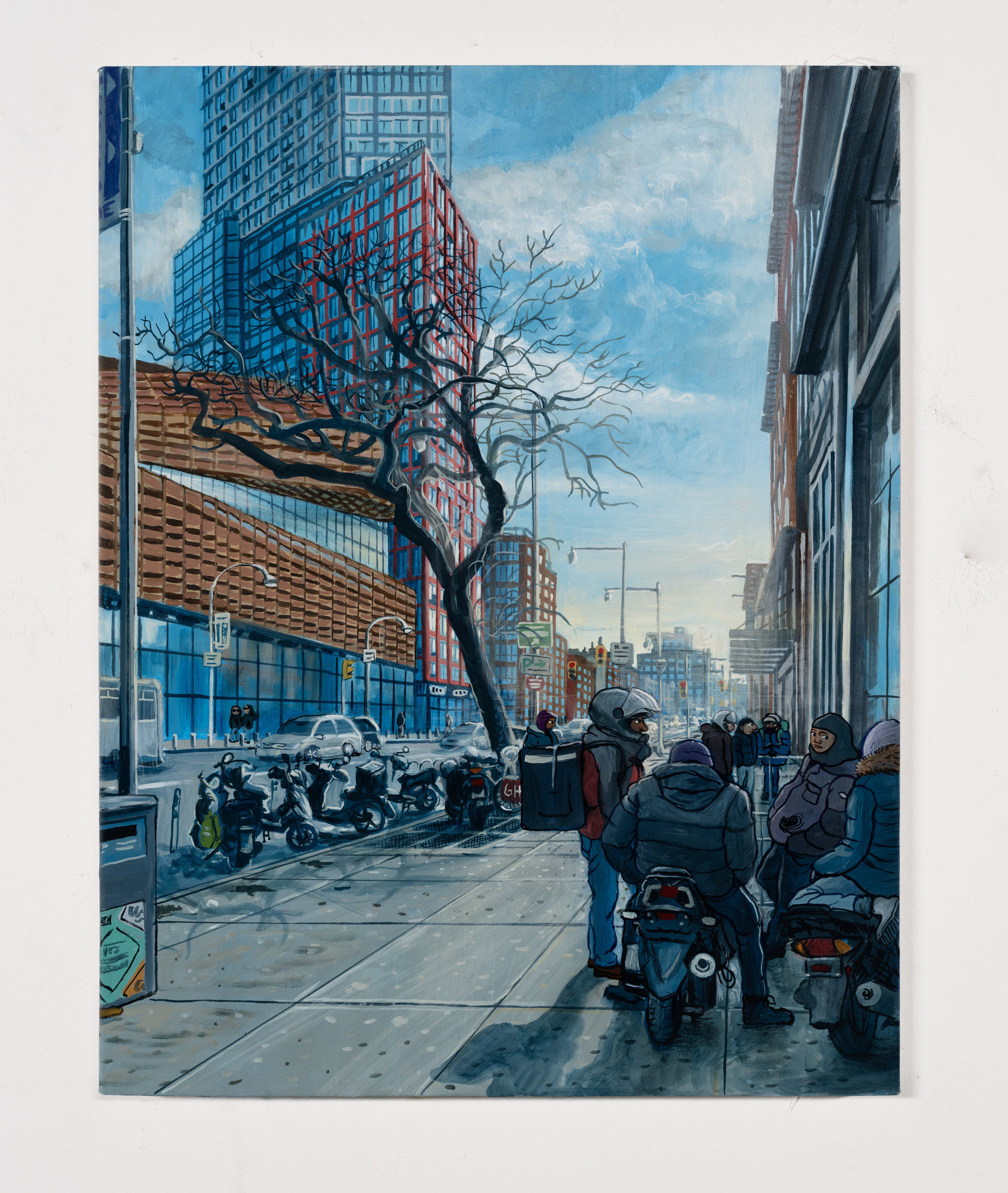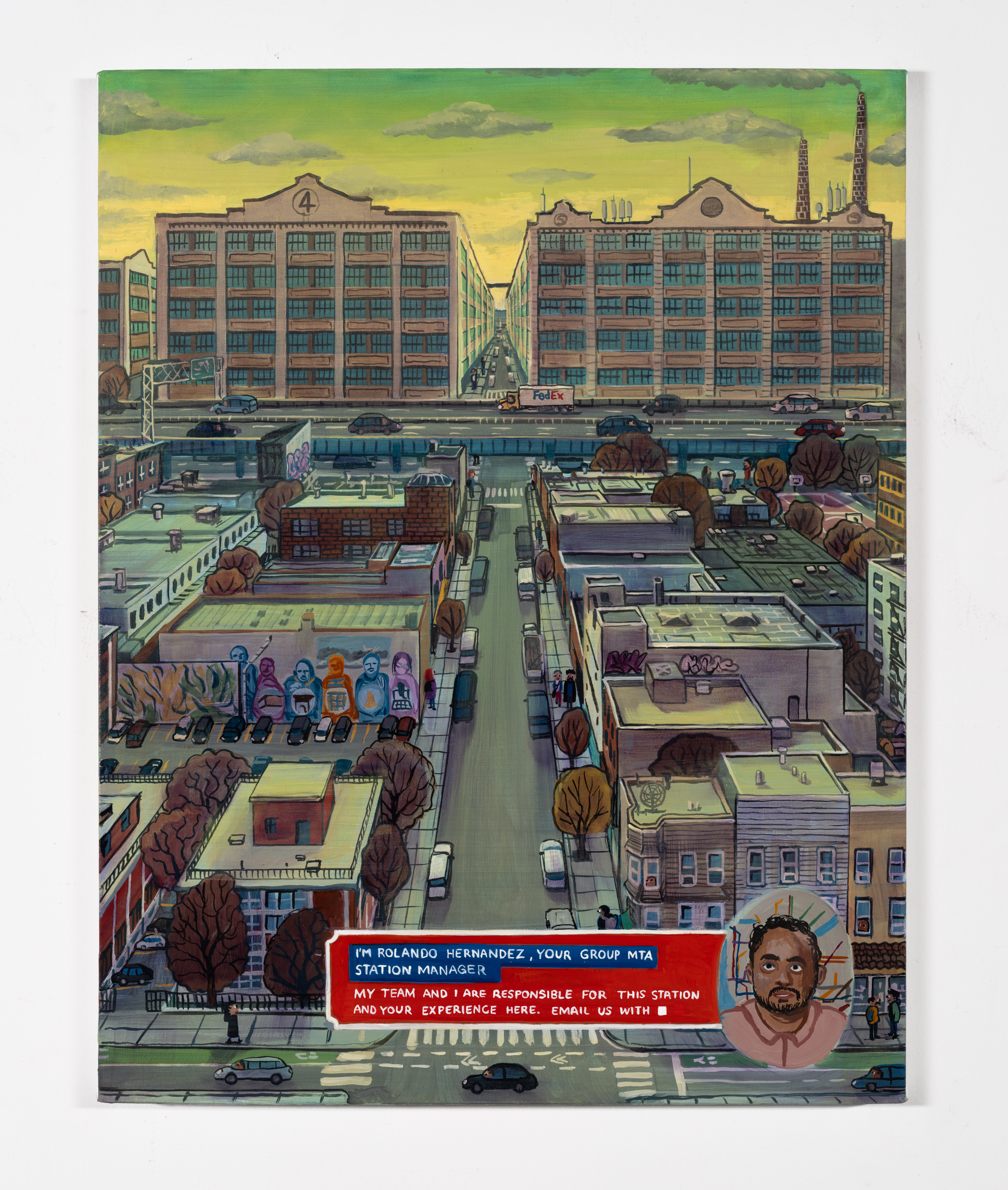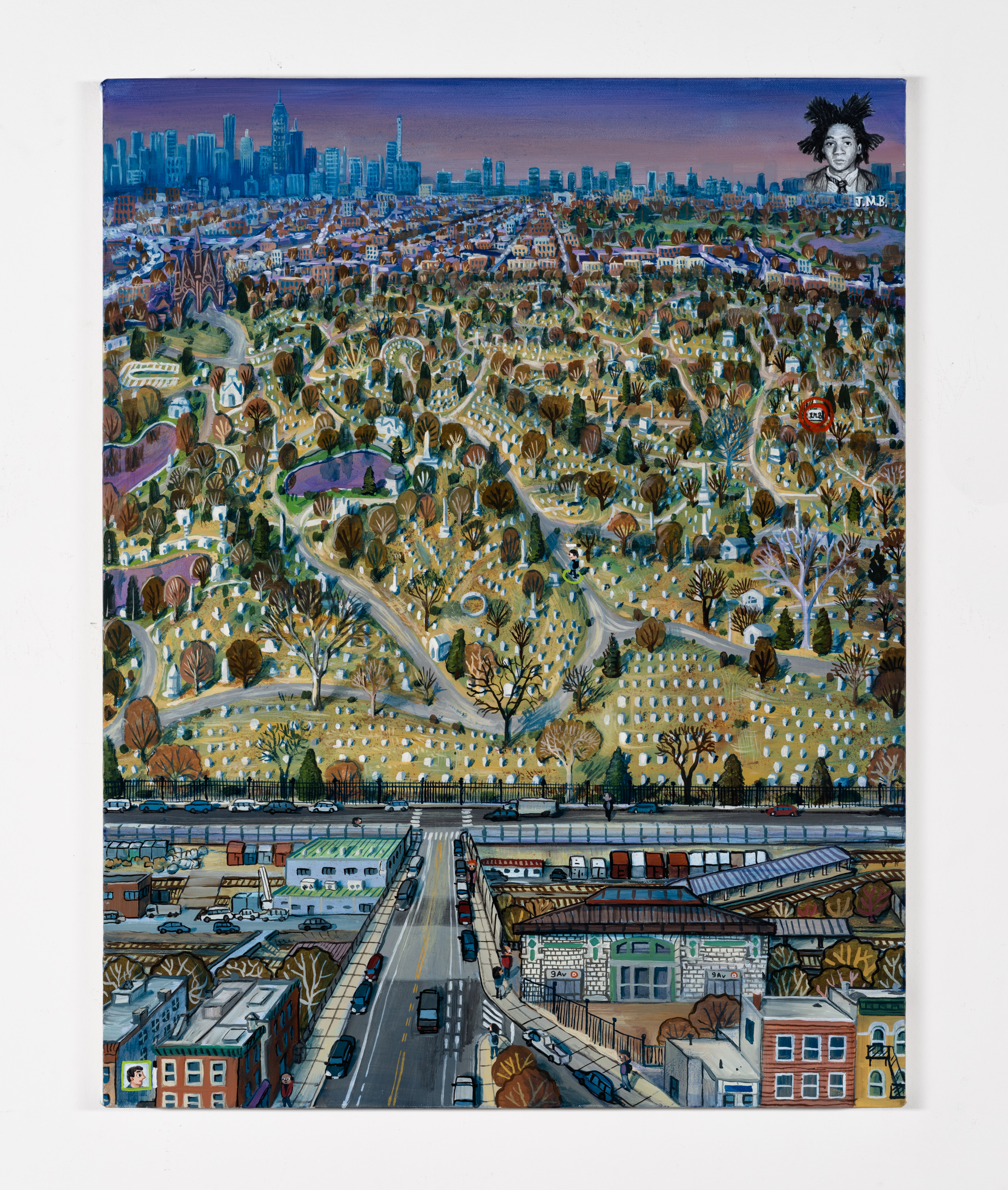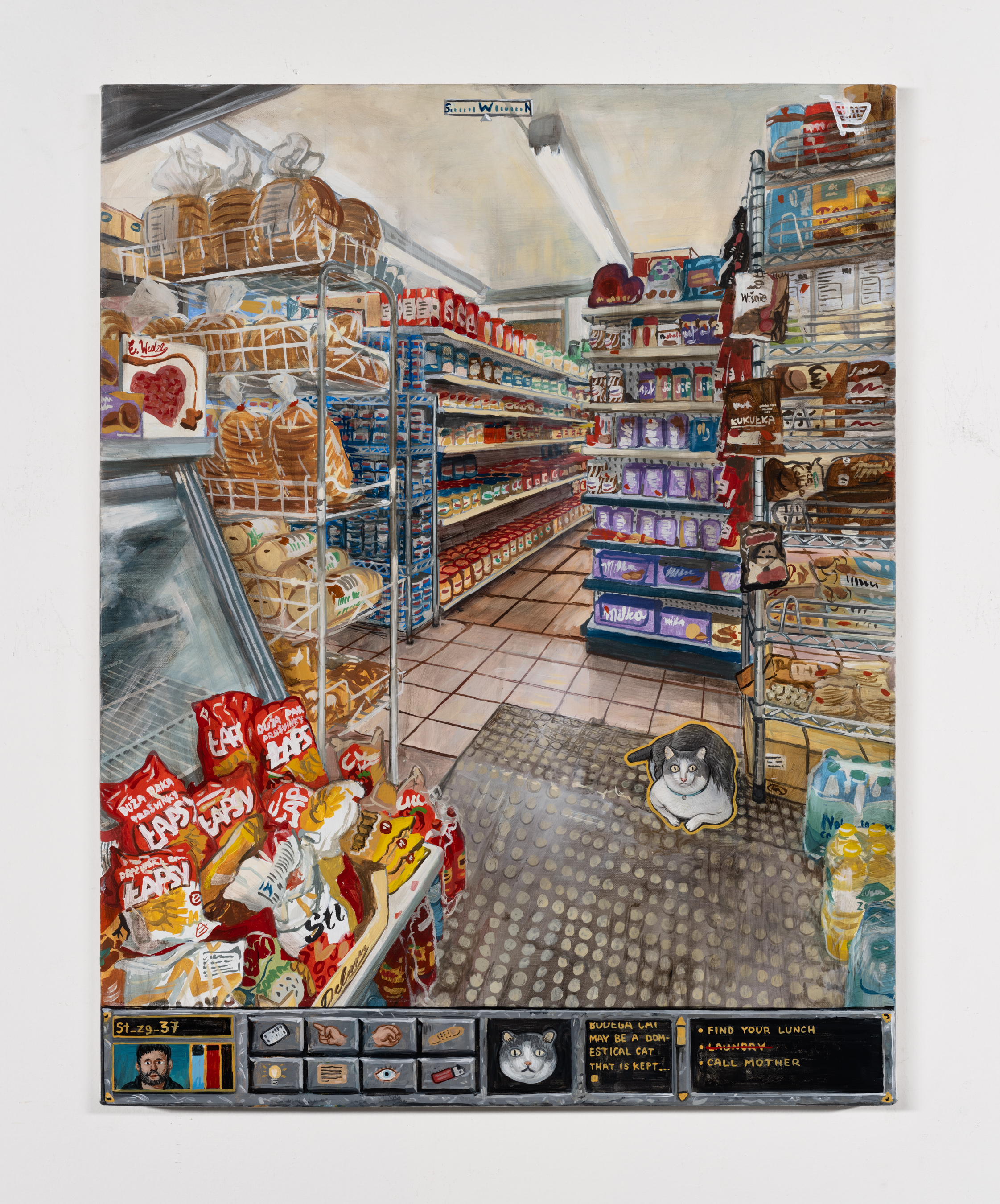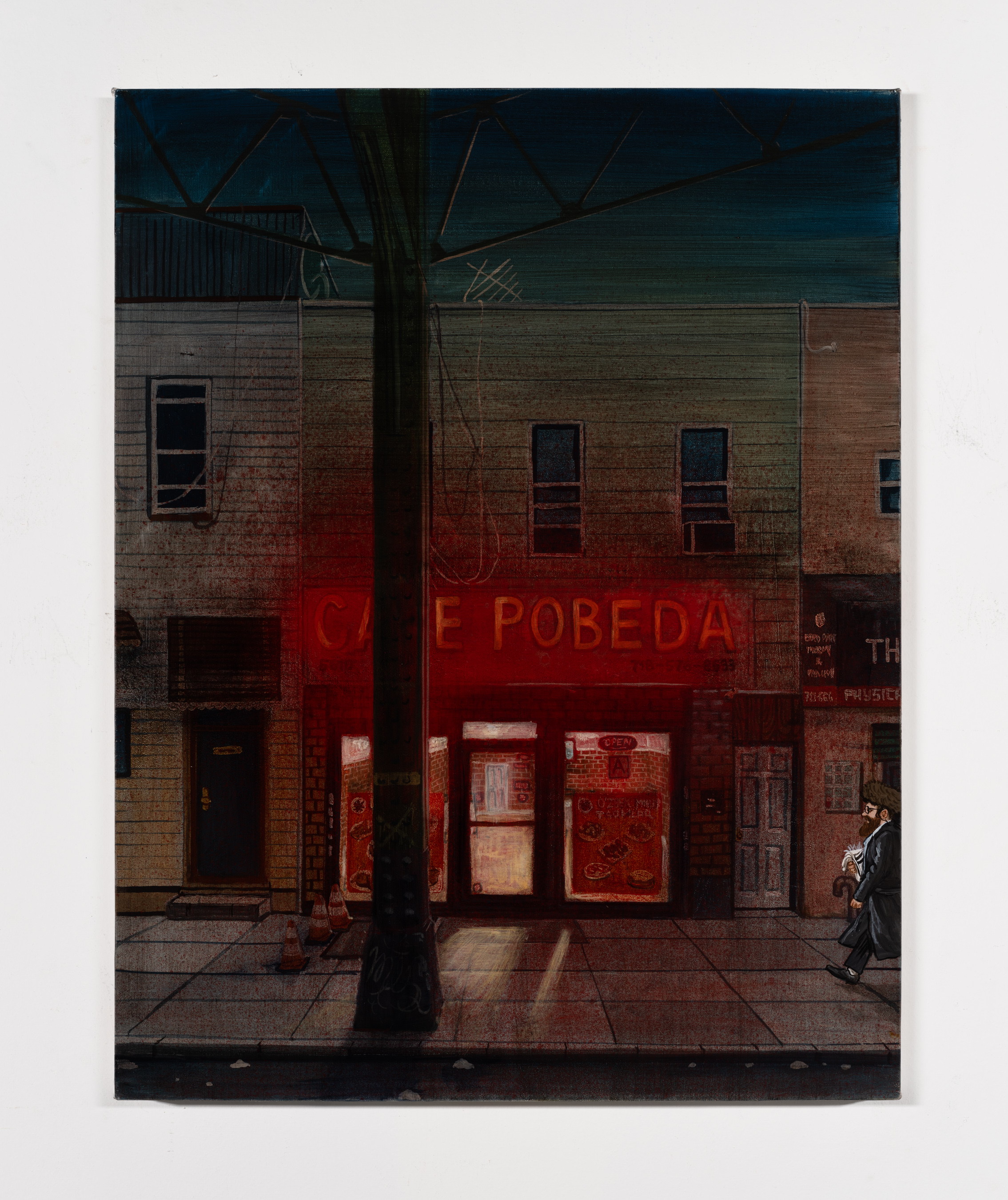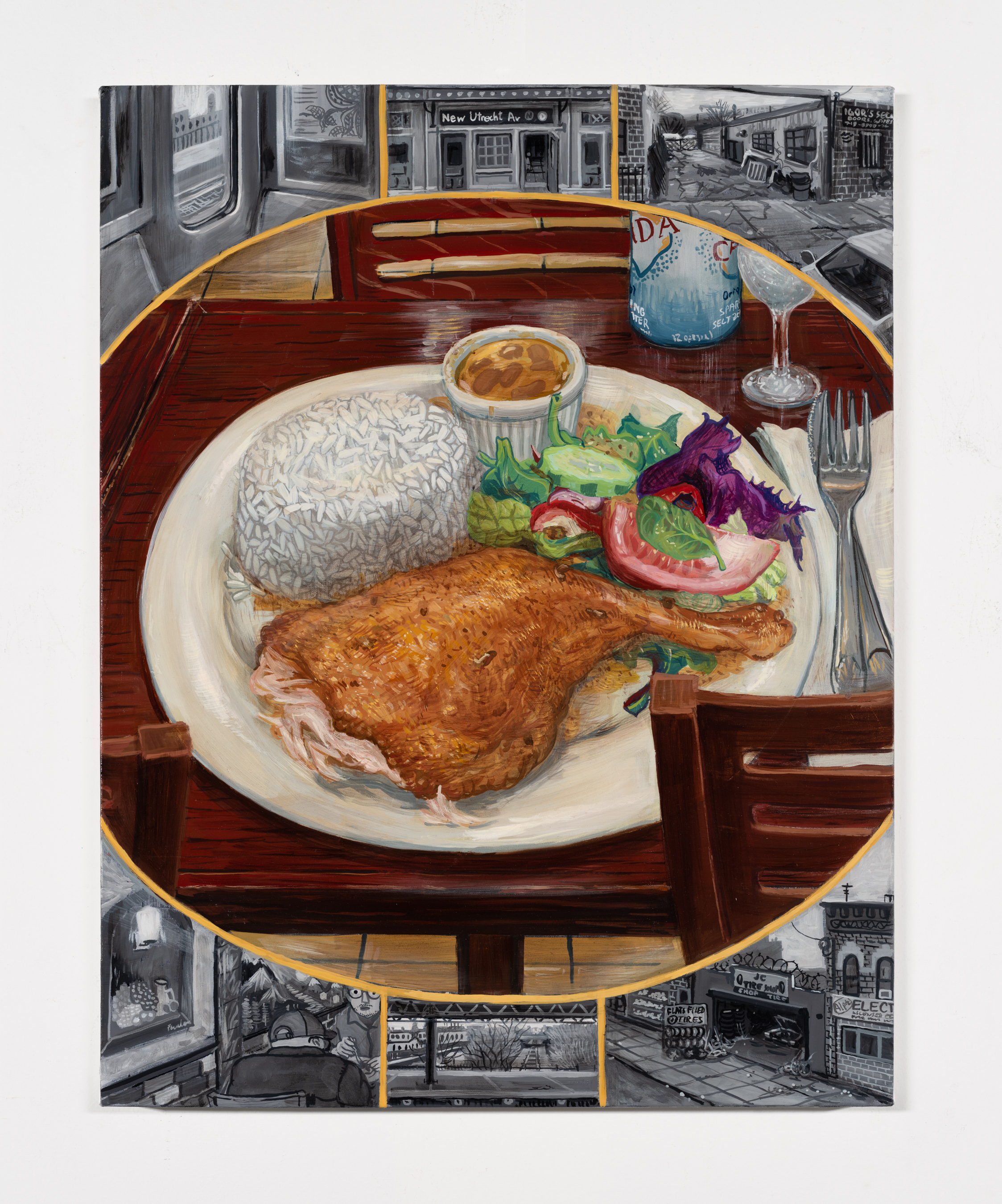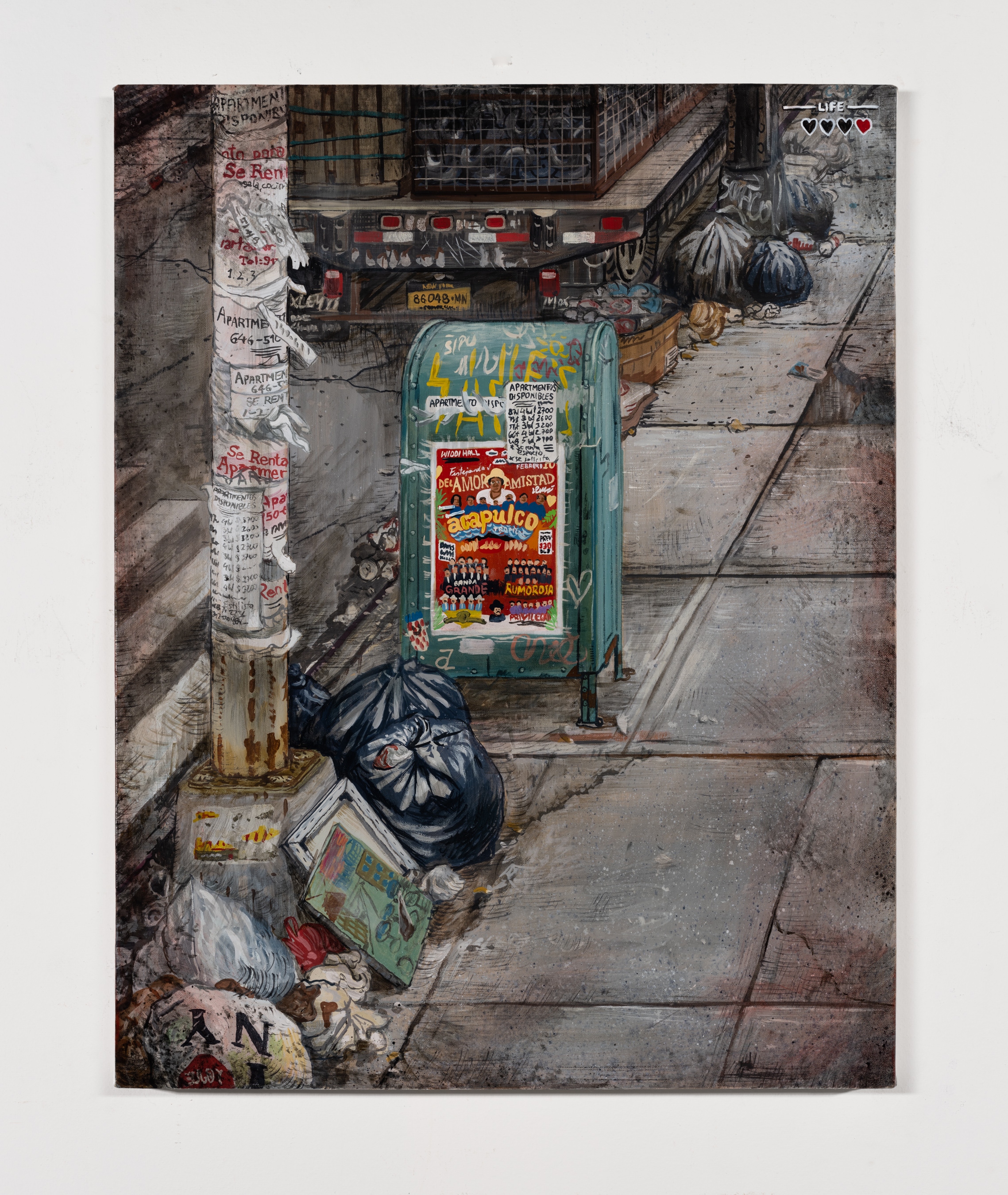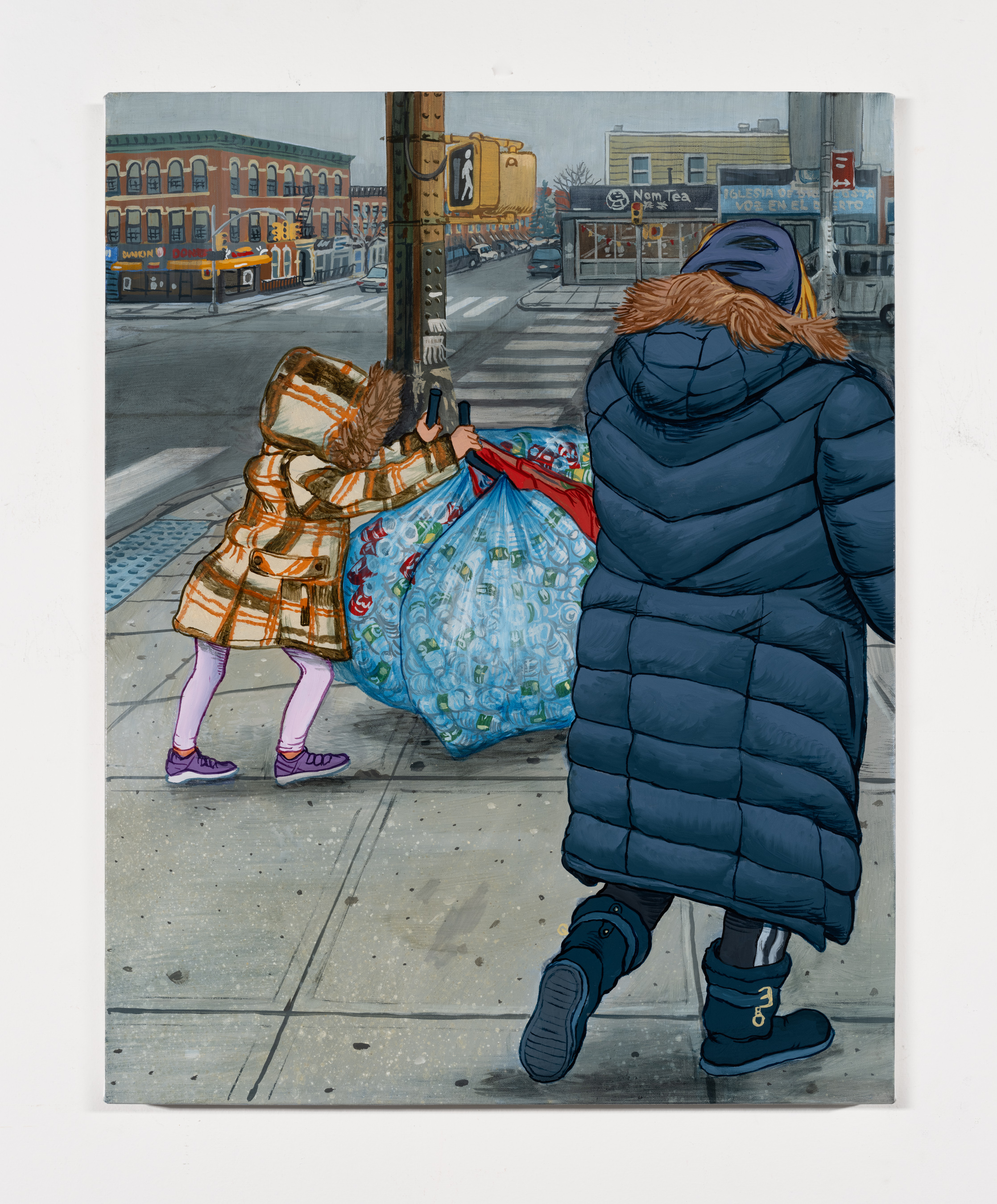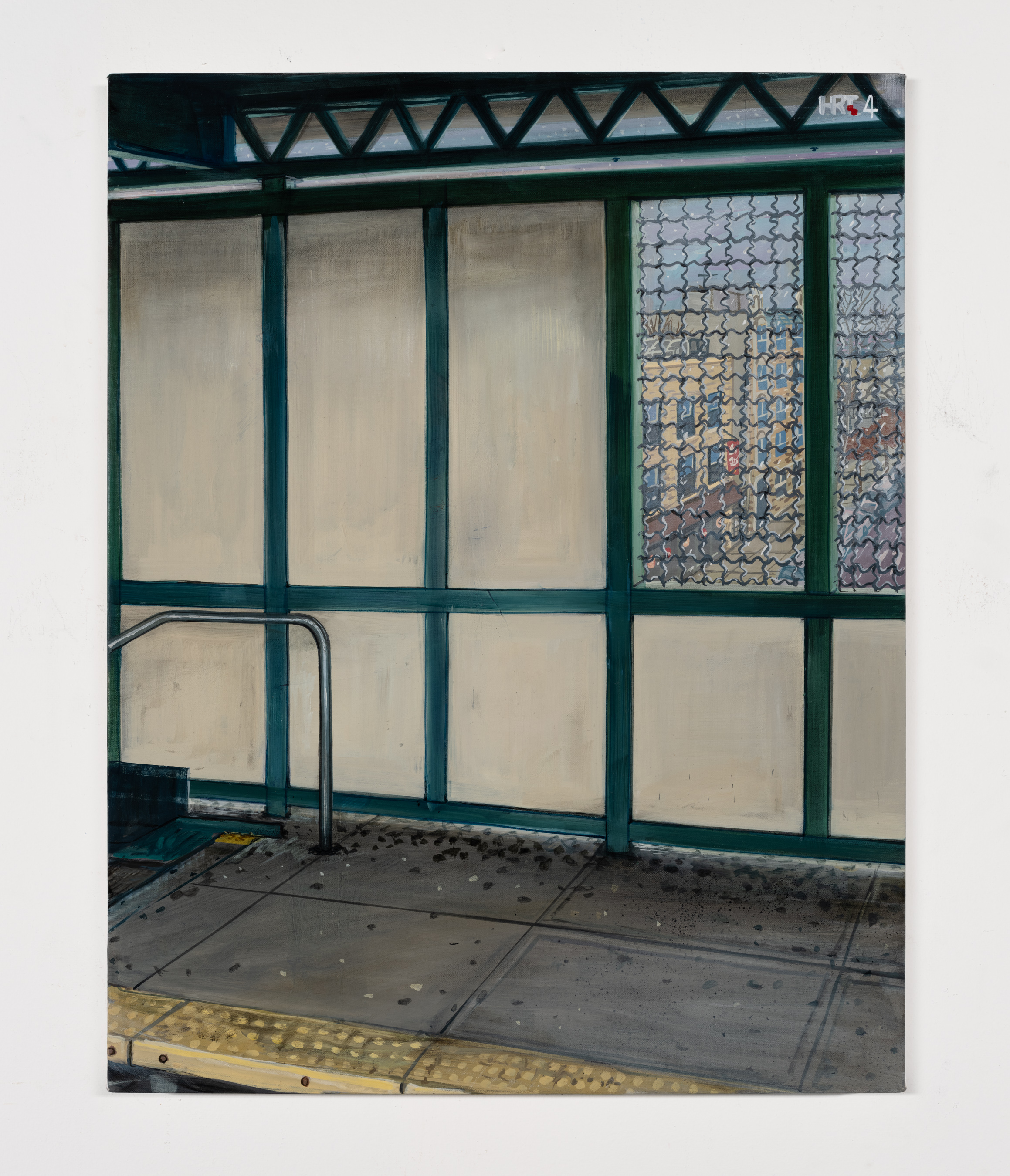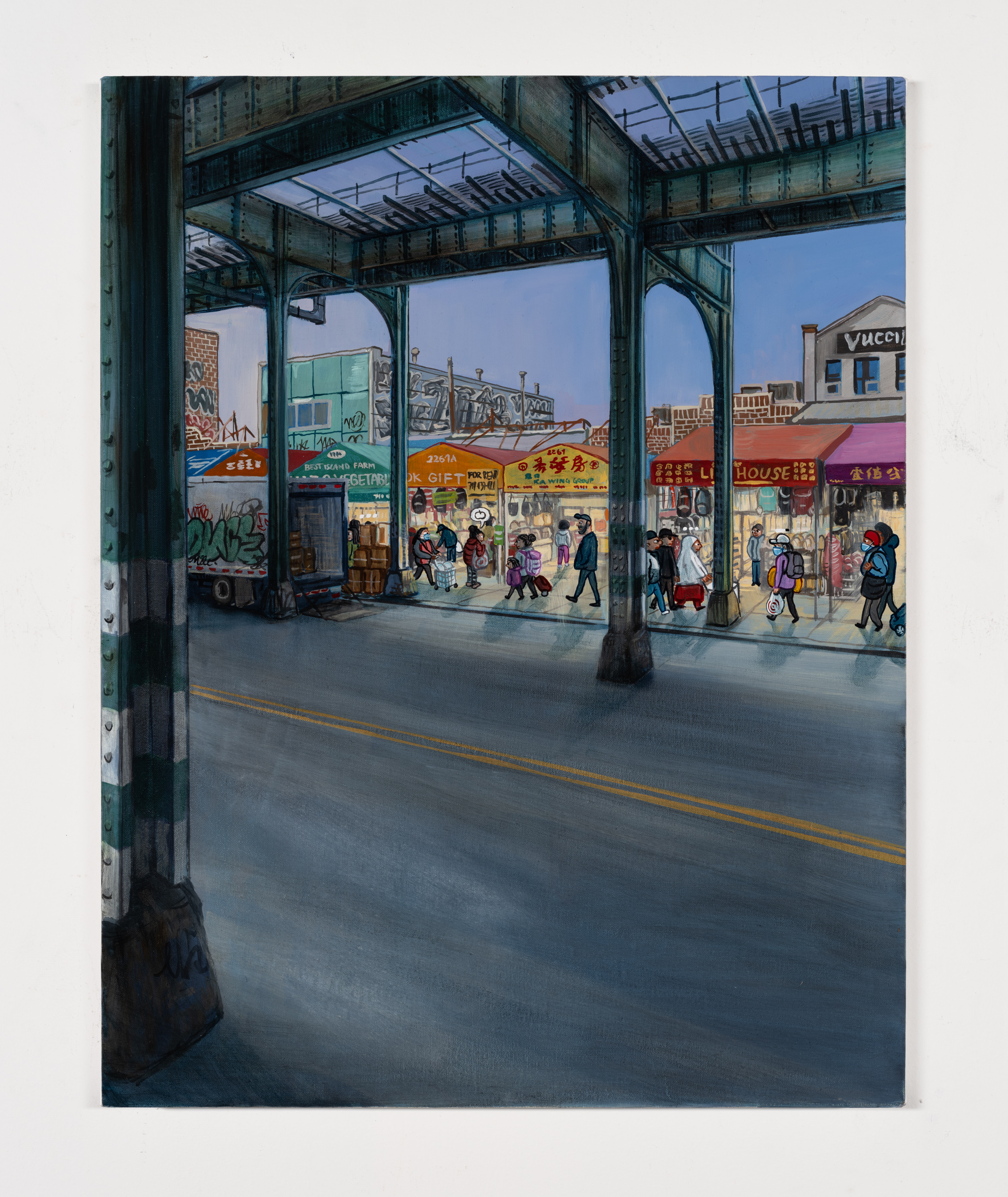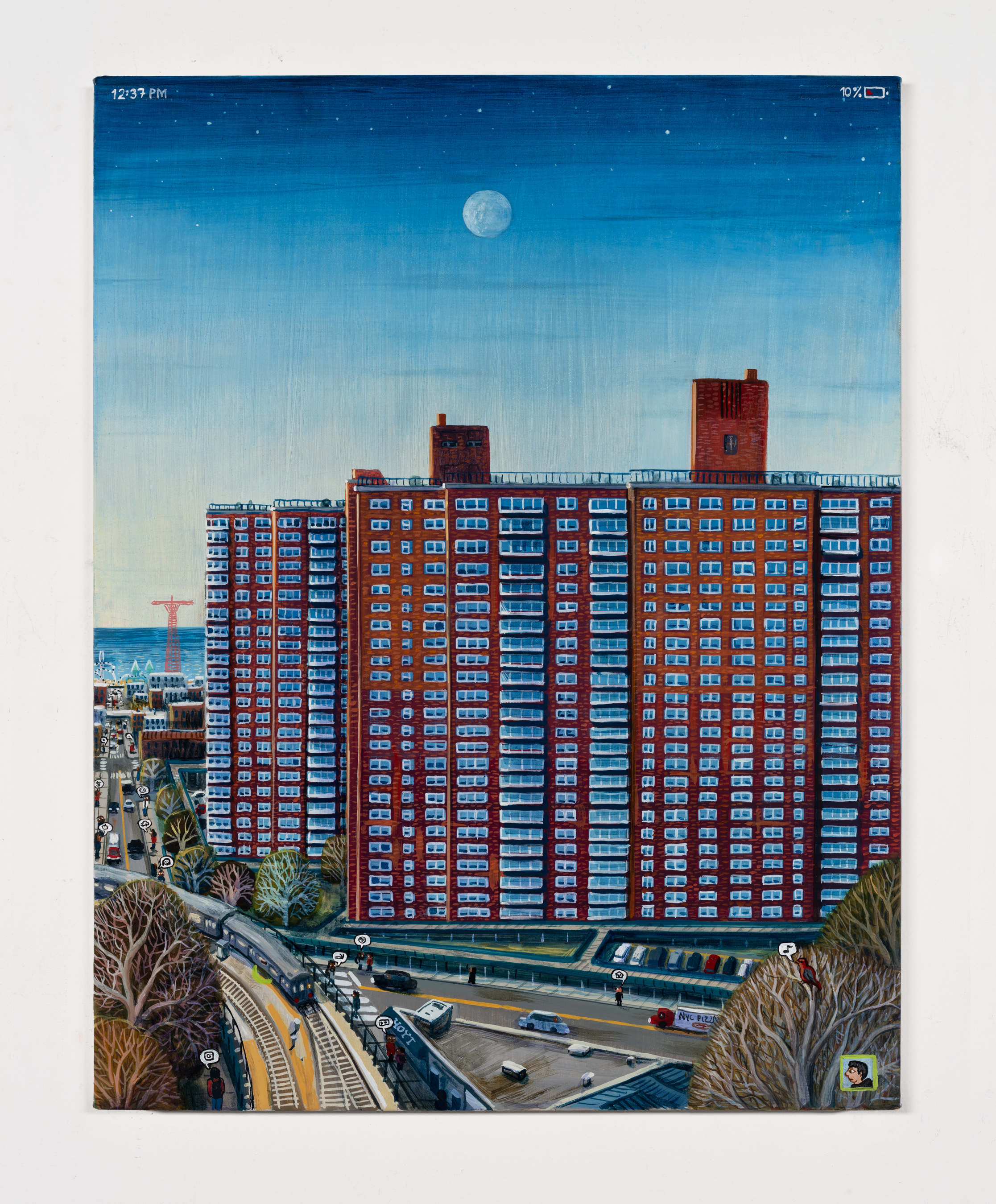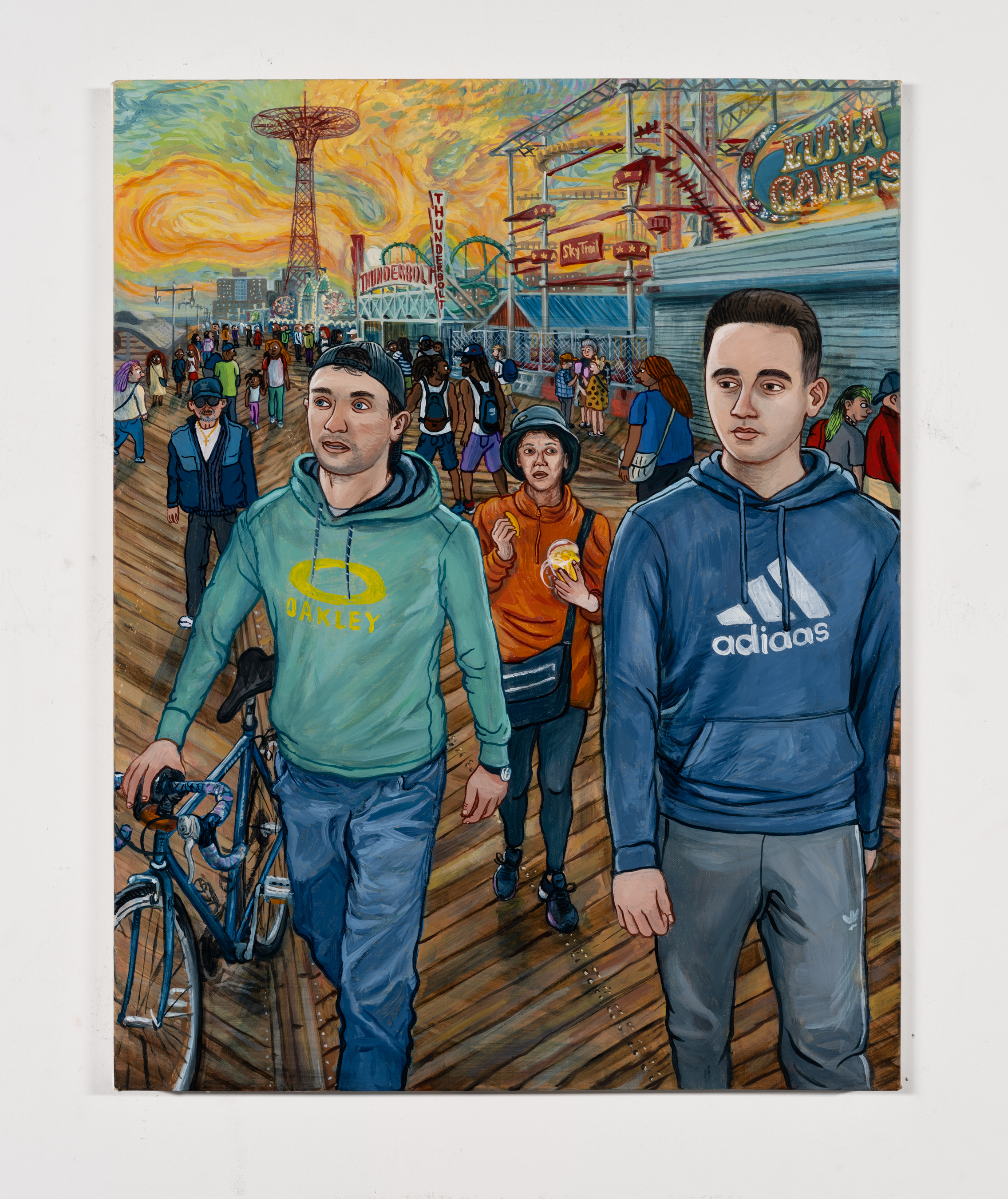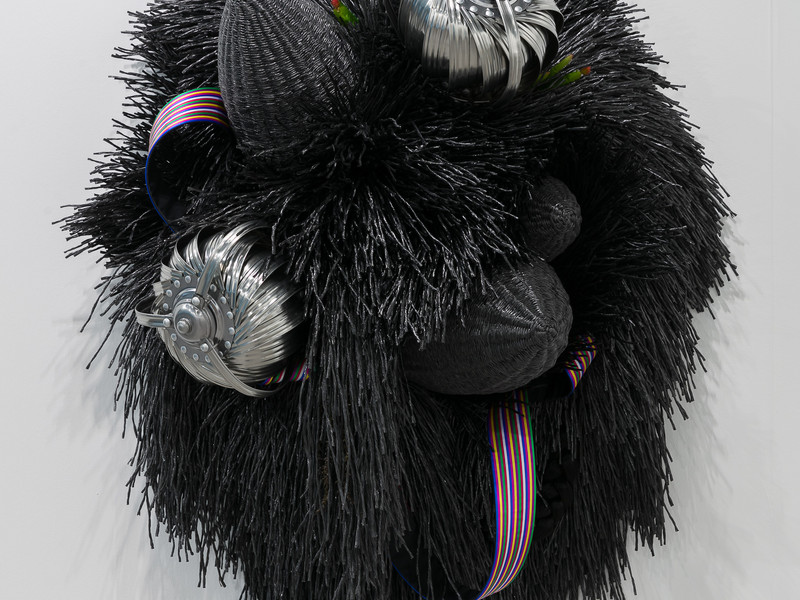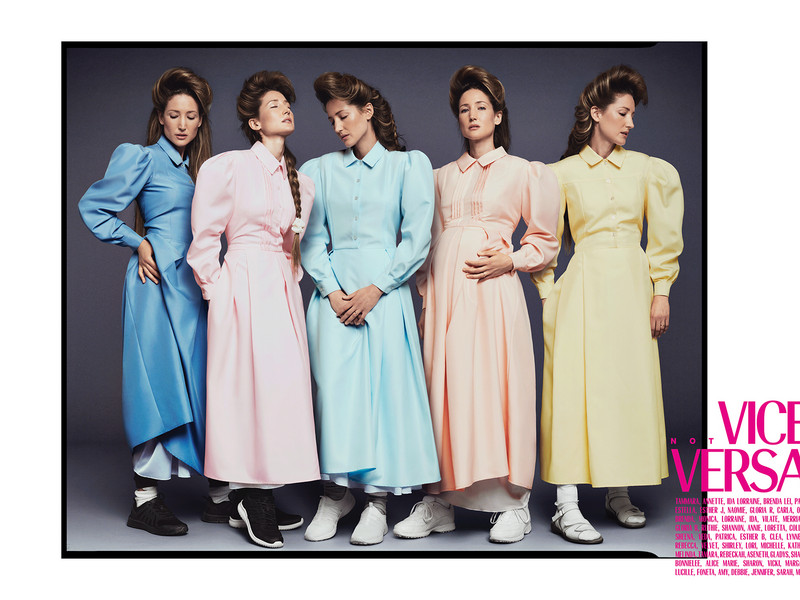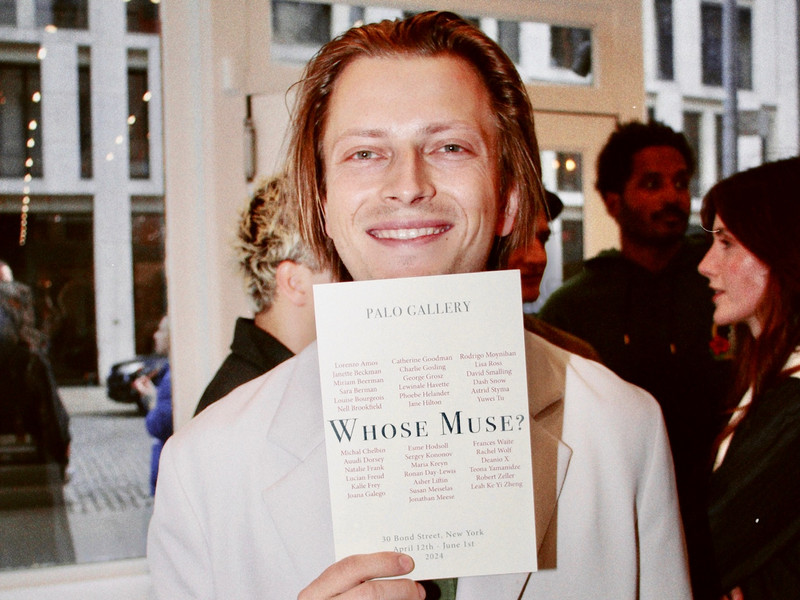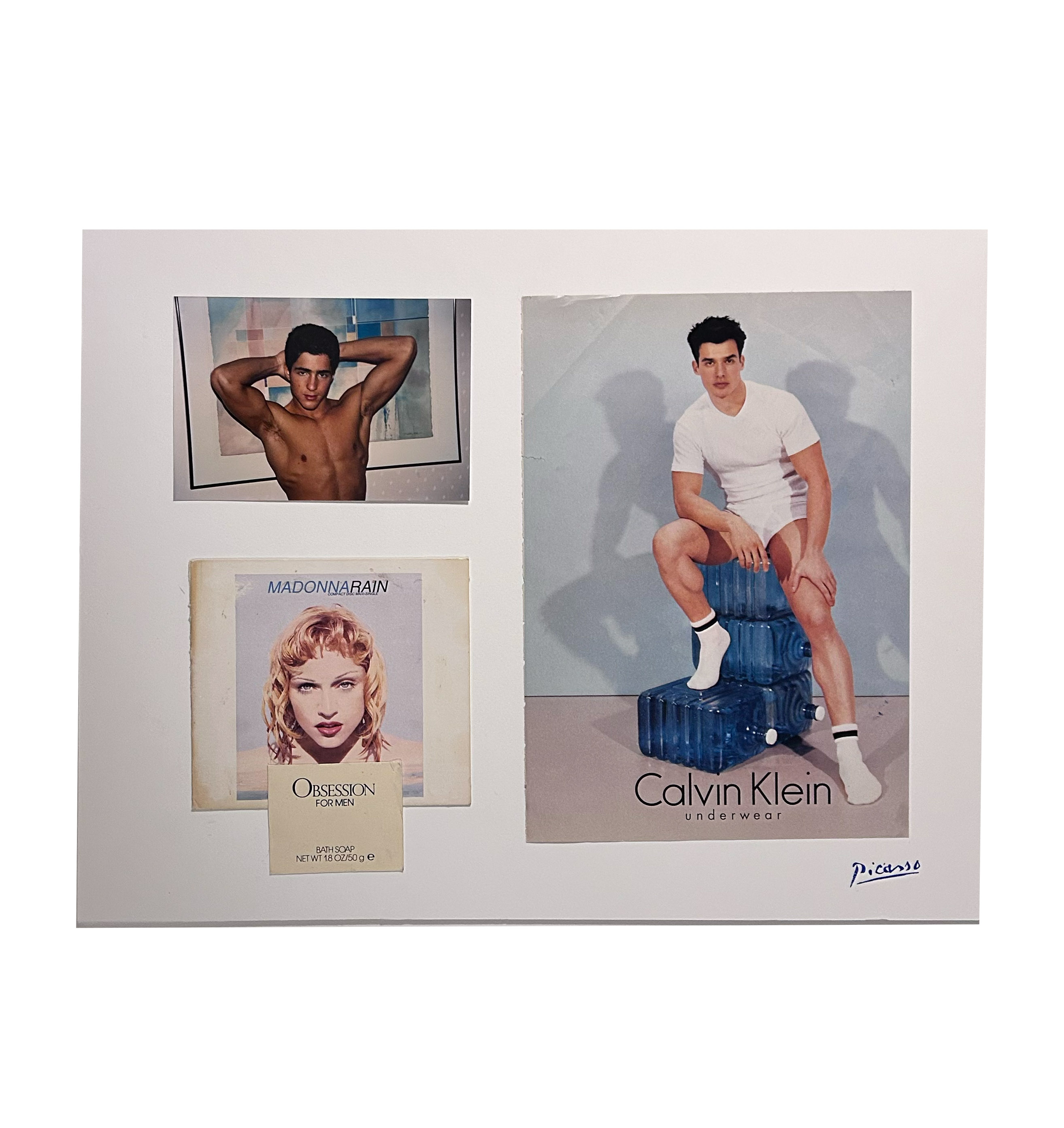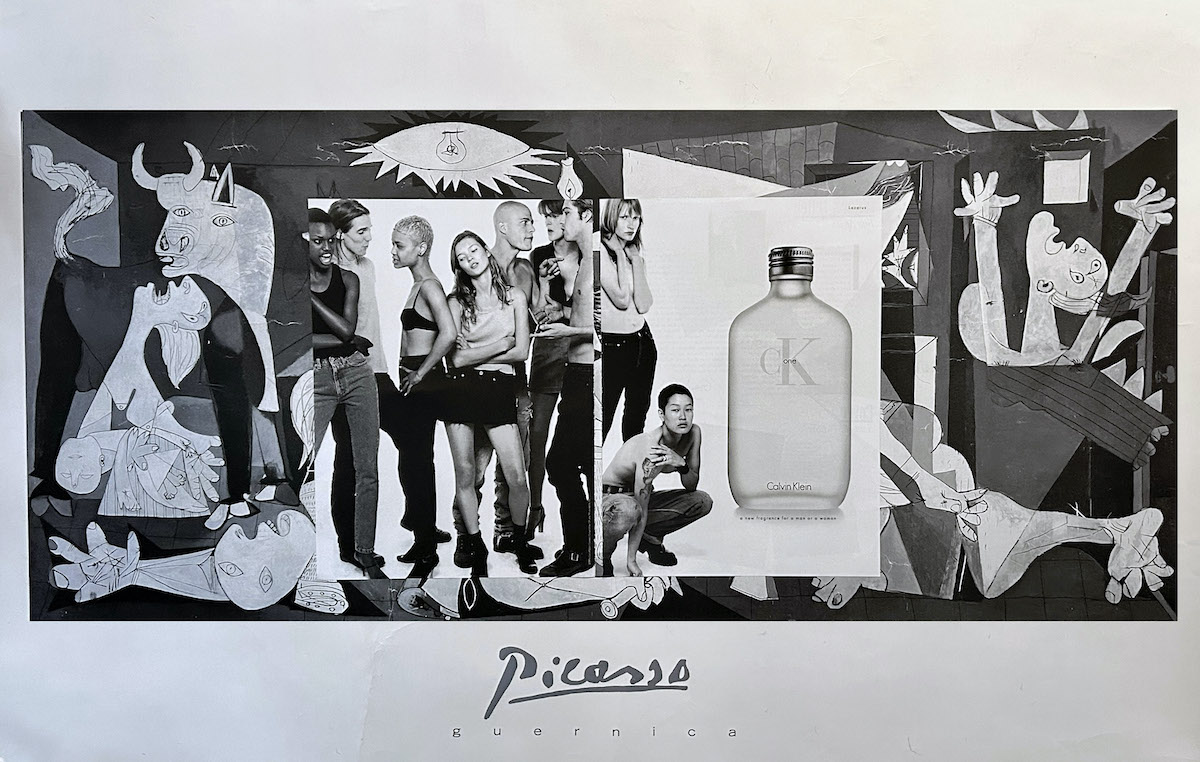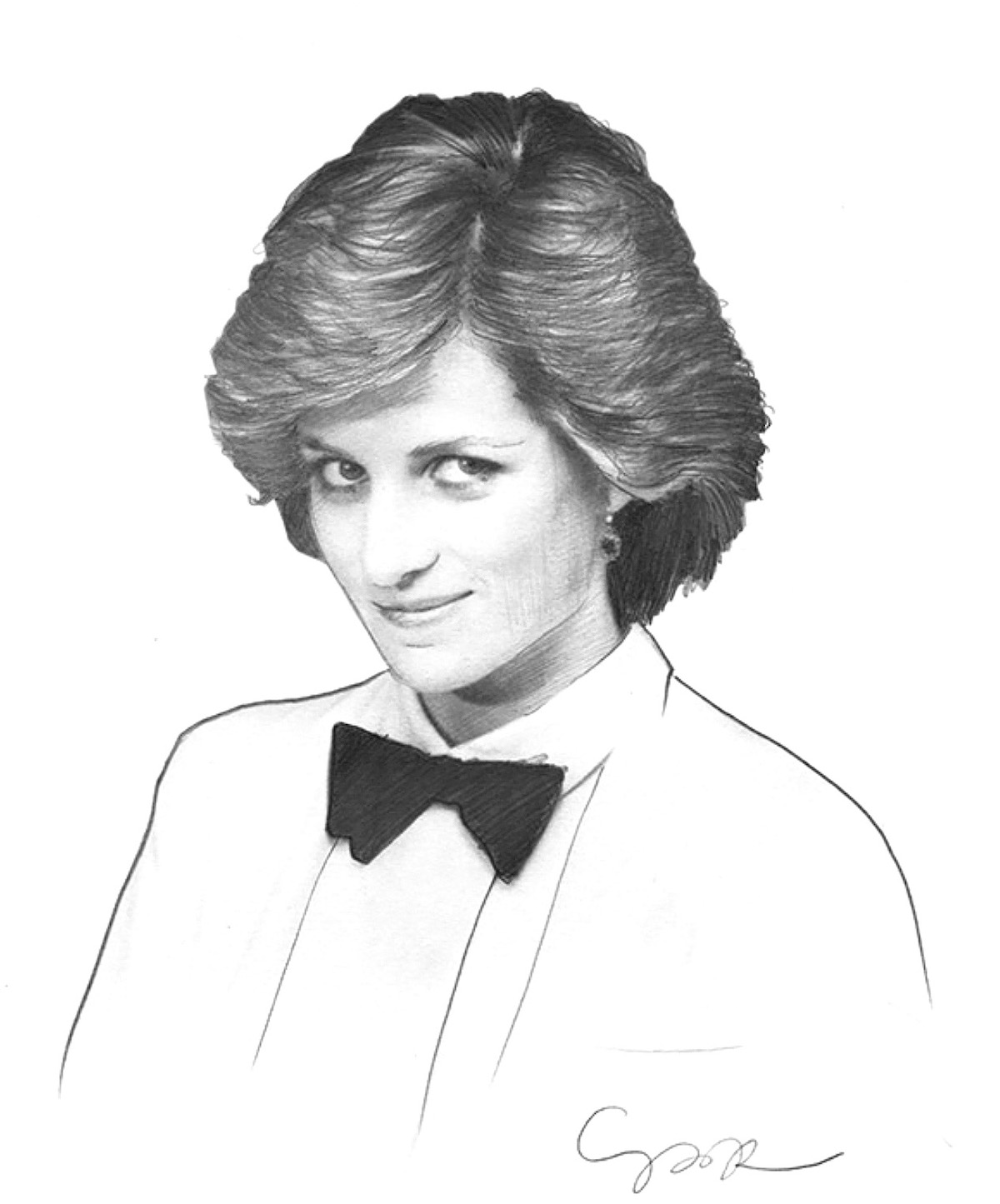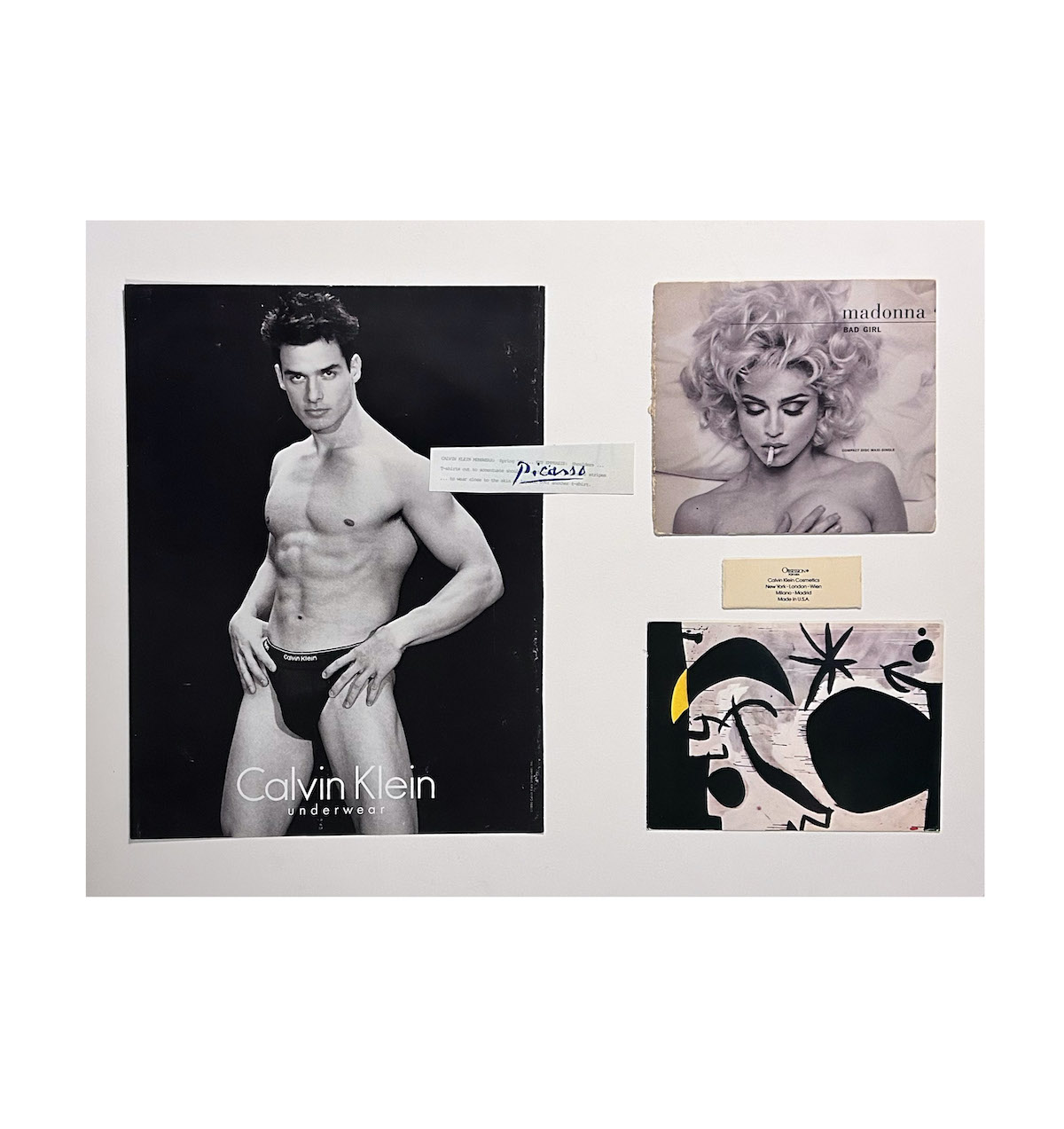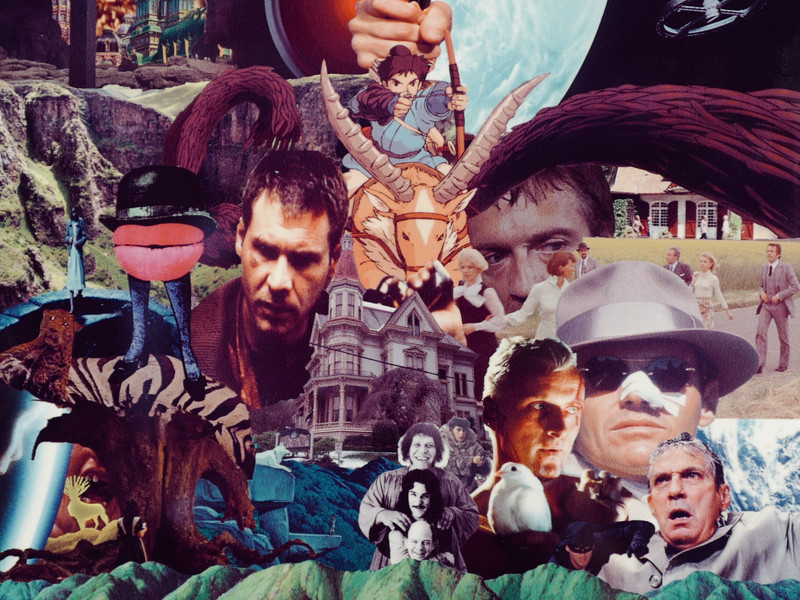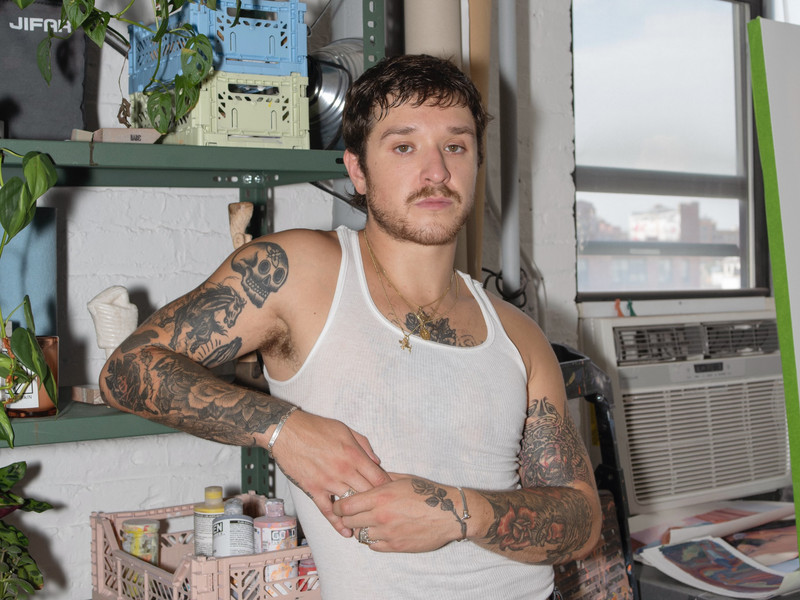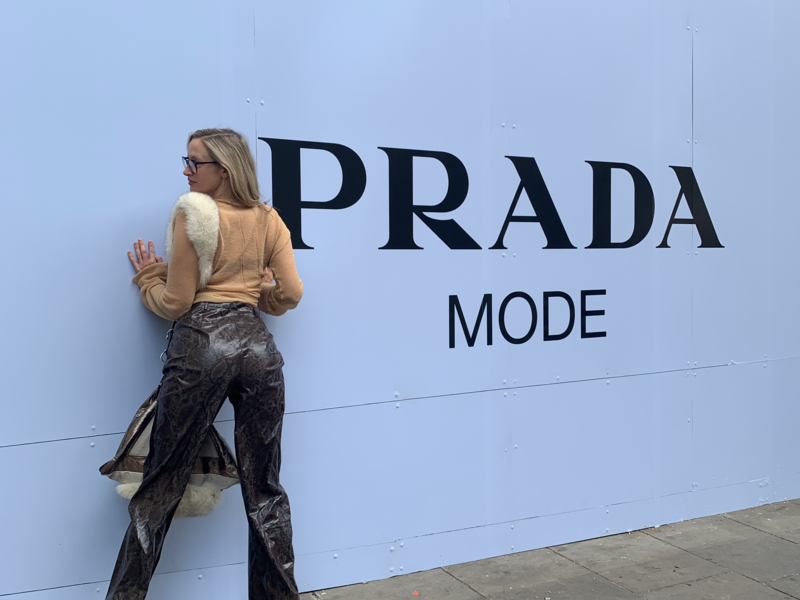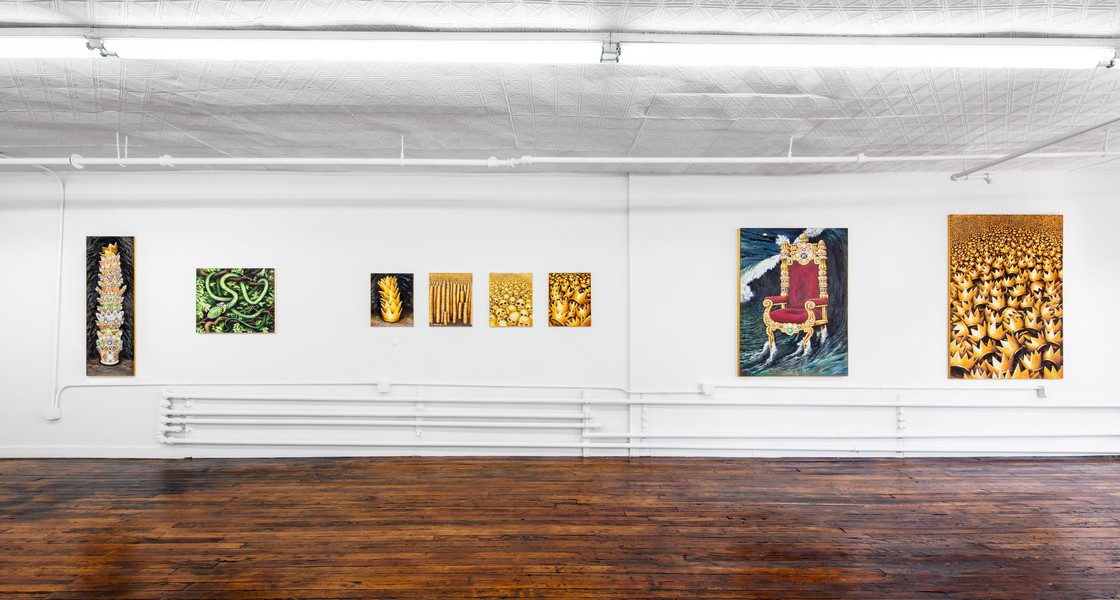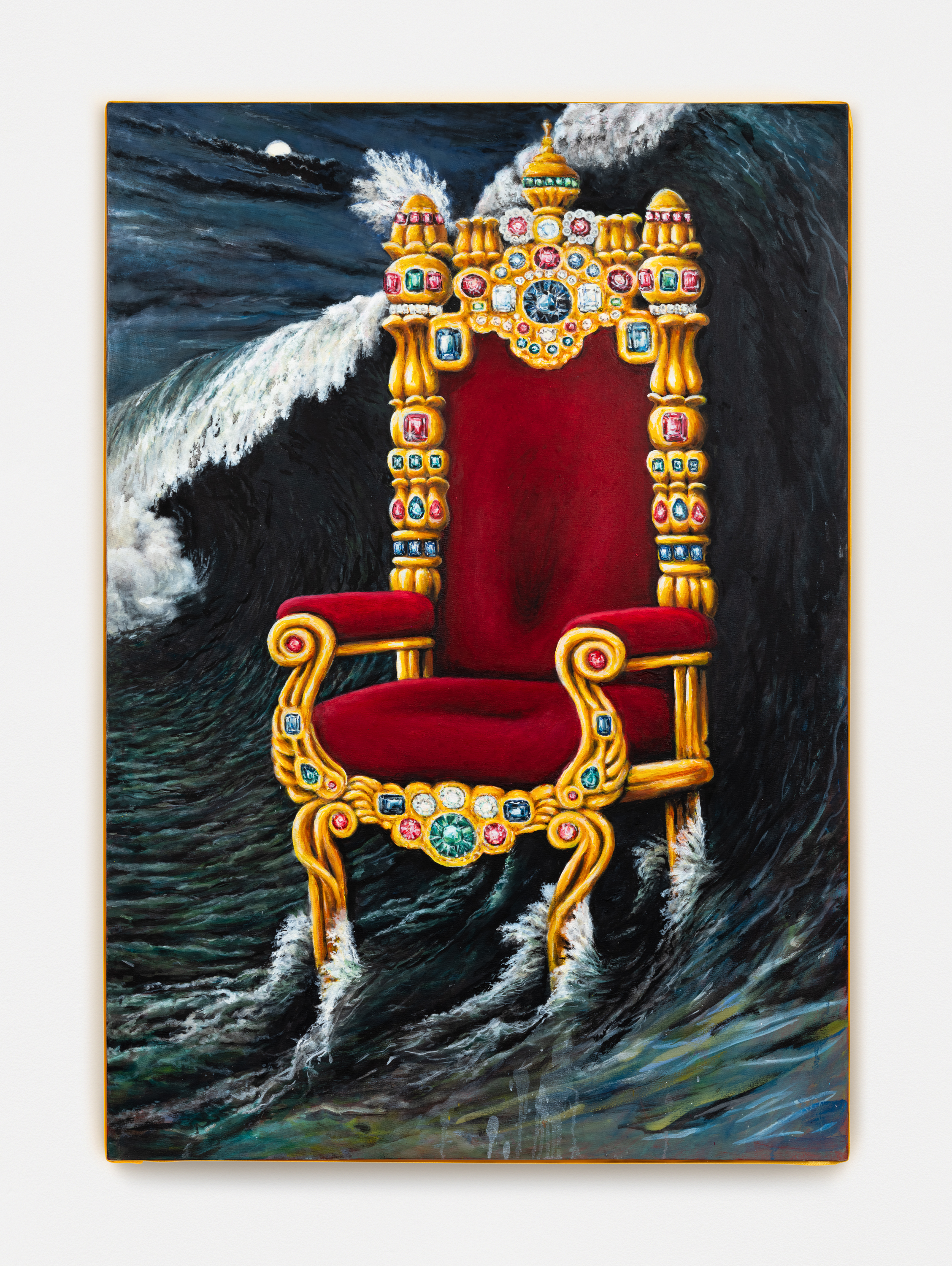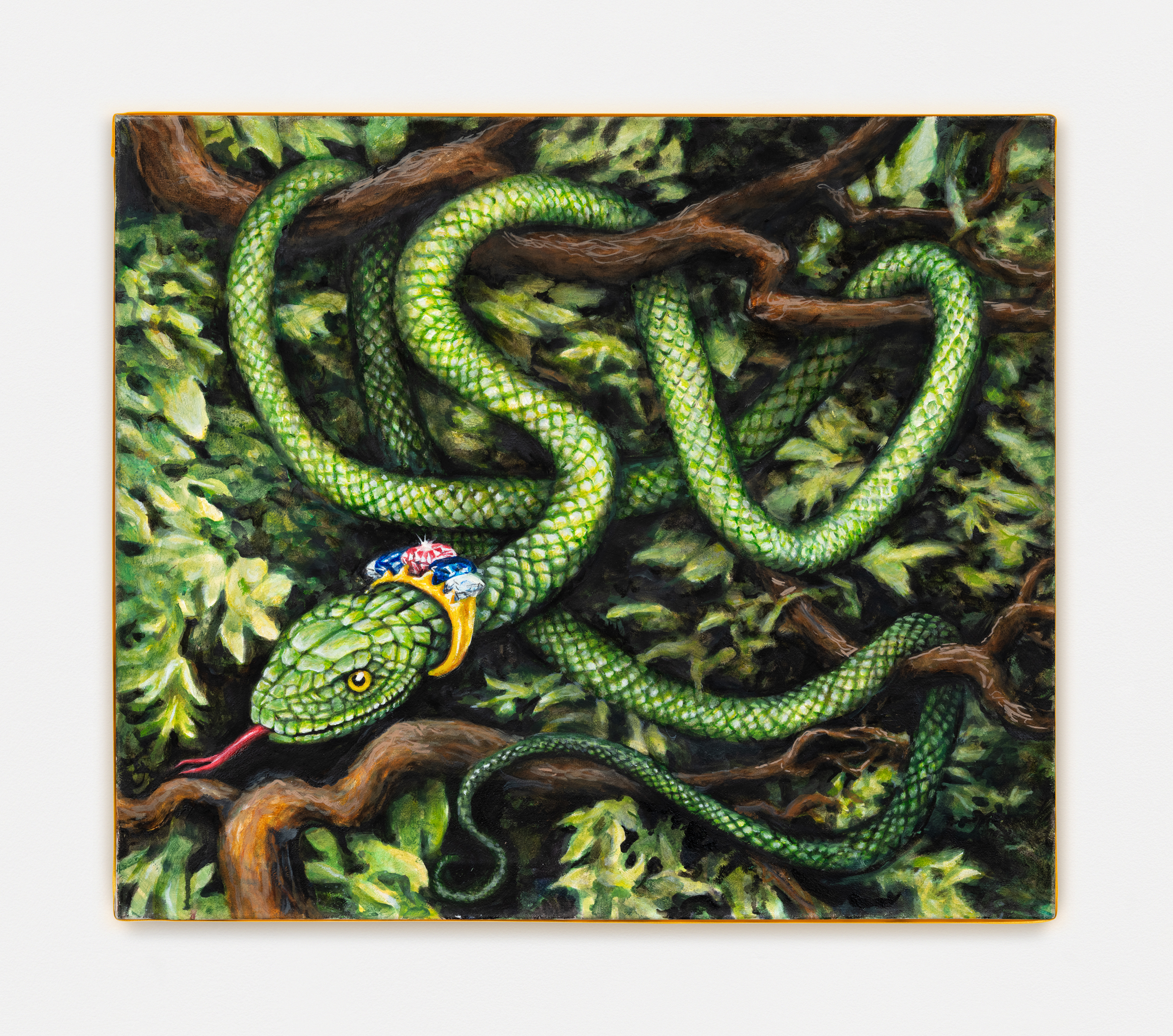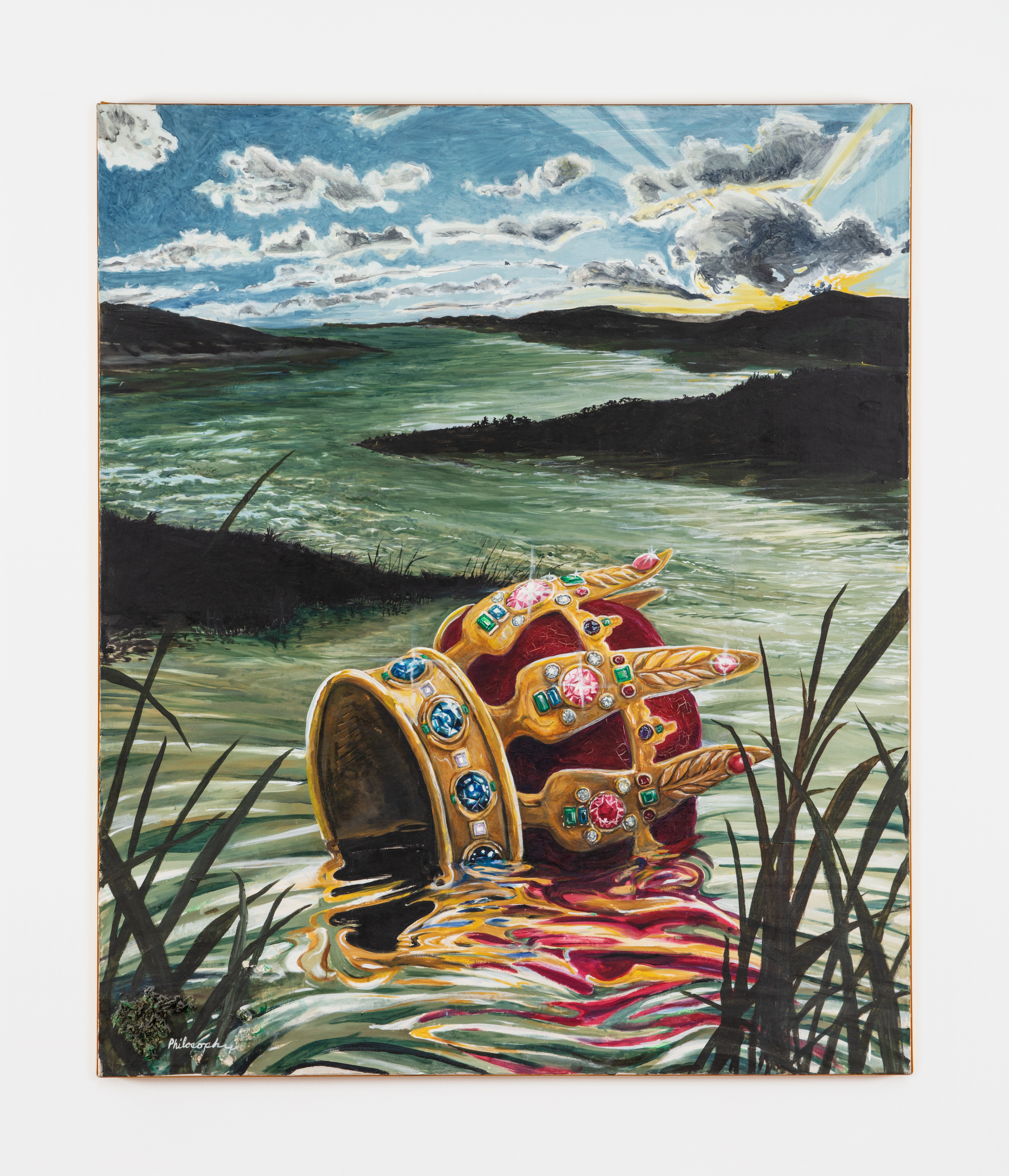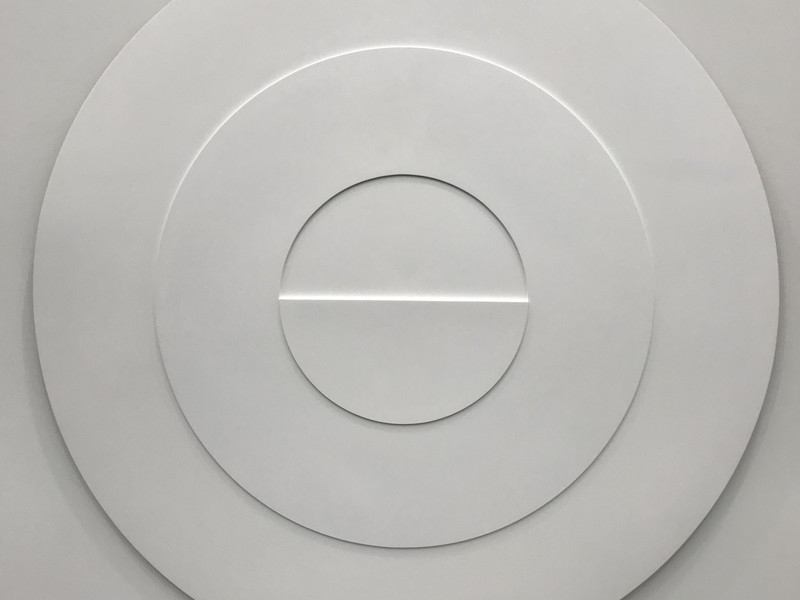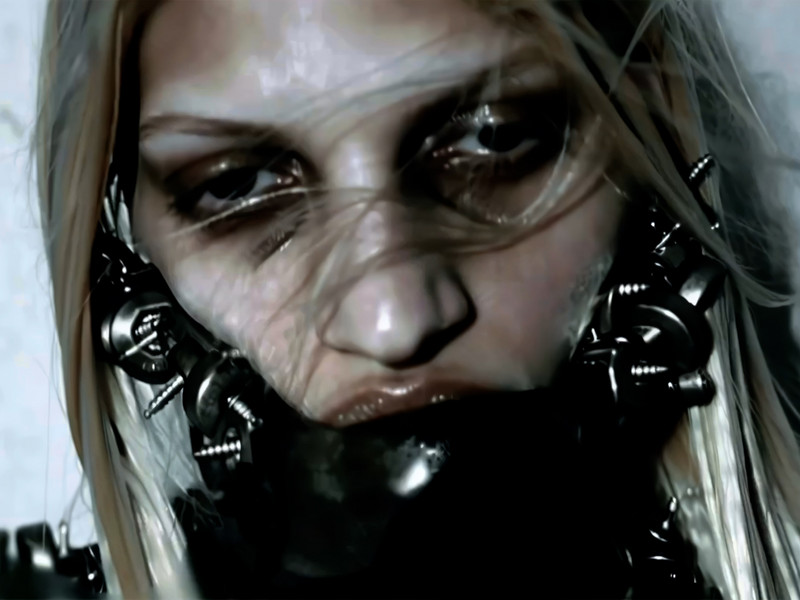What’s your favorite spot in New York?
My favorite spot is Village Works bookstore on 12 Saint Mark's place that my friend runs. Do you know that place? It's about New York urban culture and there’s a lot of graffiti and a lot of zines and self-published books and art books. It’s really fun.
What’s your favorite spot in London?
Anywhere along the Jack the Ripper walk. I know all the haunted houses, I know all the spooky places and notorious places.
Tell me about your studio. What is the interior like? Do you keep it a certain way?
Messy. But it's nice to come out here because I can make a mess. I don't have to clean up after myself every afternoon before, oh, the wonderful Simon [Hawkins’ friend] gets home and chides me and I don't stink the house up with turpentine, stuff like that. It's really nice and it's great to, just, I don't know, not be in the house all the time.
So you’re an advocate of the separation between house and studio?
I didn't used to be. I would rather live and work in the same place. But, it's not nice to do it to my friend, so that's the reason. I mean, it has nothing to do with how much I like it or anything like that. I'd rather just, like, get out of bed and go and paint and not have to get on the train.
Critics have described your paintings as realism, or narratively informed works. How would you describe the style you adopt?
Well, I made up this term “pseudo-realism.” I don't know anatomy. Like, when I paint some animal, I don't know the anatomy of it. So in that sense it’s like pseudo-realism. I mean, an academic person would look at it and go, “a wooly mammoth doesn’t have joints going in that direction.” And those gems in the painting in the Off Paradise exhibition… I don’t know what a gem looks like. I don’t know how many sides a gem has, or anything [laughs]. But, a big jeweler bought the painting. And, you know, they think it’s funny. Anyway, so I made up that term: pseudo-realism. But it’s surrealism basically.
In art school, they tell you: “paint what you see and not what you know,” in order to encourage realistic depictions rather than subjective renderings. It sounds like you’re taking the opposite position by articulating forms with which you’re not familiar.
Yes, but I can see it! I can see it in my head! I’m really good at visualization. I don’t even need to do a preliminary sketch. It’s so in my mind that I just look at the blank canvas and fill it in.
Tell me about your subject matter.
All the stuff that I paint is stuff that you couldn’t see in real life, that you would want to. Some people want to see a ghost, but they’re never going to be able to. They’re never going to be able to see a caveman, or experience Cro-Magnon live, or something.
Tell me about the show! Was there something from the story of the “dream mine” that compelled you to portray it visually?
Well, it’s always been in my history. I mean, you know, my grandpa bought the stock and it was always kind of just a family joke, basically. I mean, nobody really believed it or anything. But it was always around and I thought it was a great story. And then I went to the mine about three years ago, and renewed my interest in it. Then I thought, ‘oh, that'll be a good idea’ because I paint things in themes anyway. Like, one show will be all about one thing. This one was about yellow and orange and gold and dazzling. So that you would want to stand in the middle of the room and spin around and go ‘Gold! Gold!’
What are you working on now?
I’m painting a series about infinity. [Showing me around the studio] A golden maze… Clouds… the inside of a tornado [all on round canvases]. This one’s of when Prince Charming had to go find Sleeping Beauty. You know how it was all thorny and stuff. This one is of a well, which will go on the floor, and this one’s of a whirlpool which will go on the floor too. There’s this place called Flying Tiger, and it’s just like this Danish –
Oh, I love Flying Tiger.
I love it. I bought all these canvases for $18 apiece. They don't even know. And I just buy all of them. I mean, I couldn't get one of these made for less than $200. They have no idea. And, yeah, so I just bought them all.
I know you were involved in the artistic community in the East Village in the 1980s. What was that like?
I mean, it was completely different and, and of course, it was great, it was a lot of fun, and it was the best time to be around and be doing art in New York. But it’s not like that anymore. I was involved with Patrick Fox Gallery but that was more like a party house than an art gallery. And I never really took the art world that seriously, but it was fun while it was happening because nobody was taking the art world seriously back then. It was like the Emerald City and Andy Warhol was the Wizard of Oz and then Andy died and so did everyone else and, and it wasn't fun anymore and I was lucky to get out.
Do you take the art world seriously now?
No. Not a bit.

